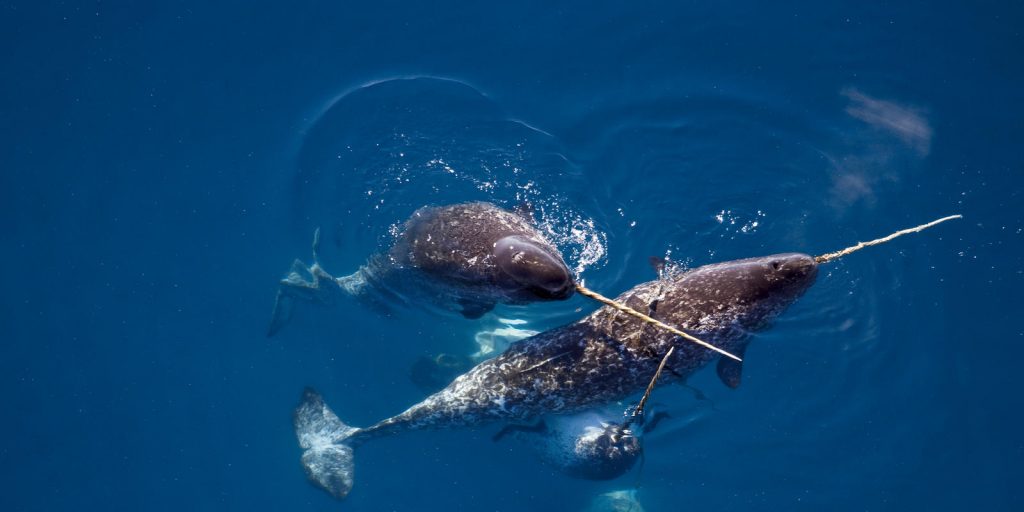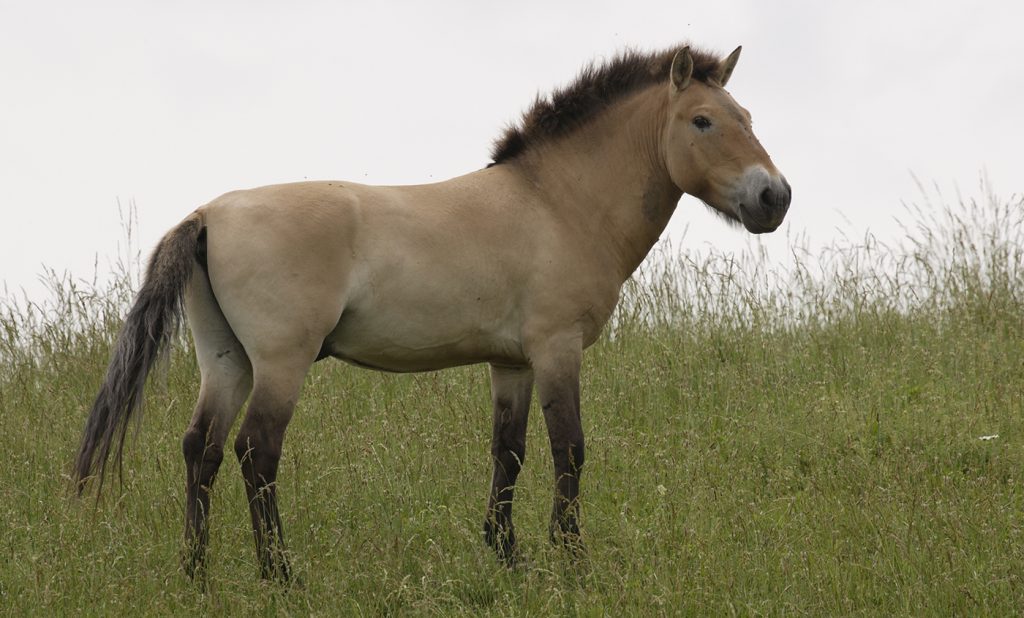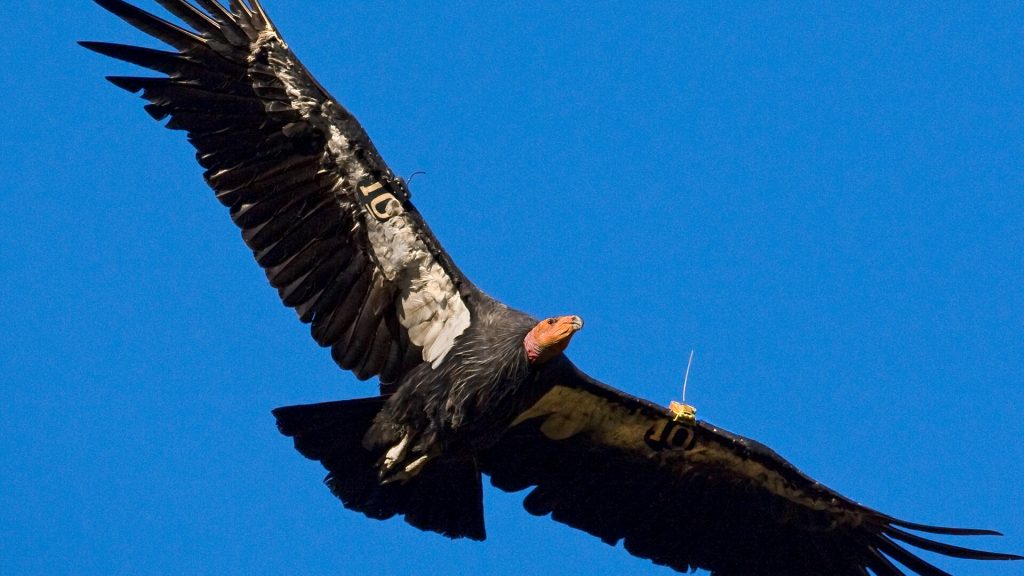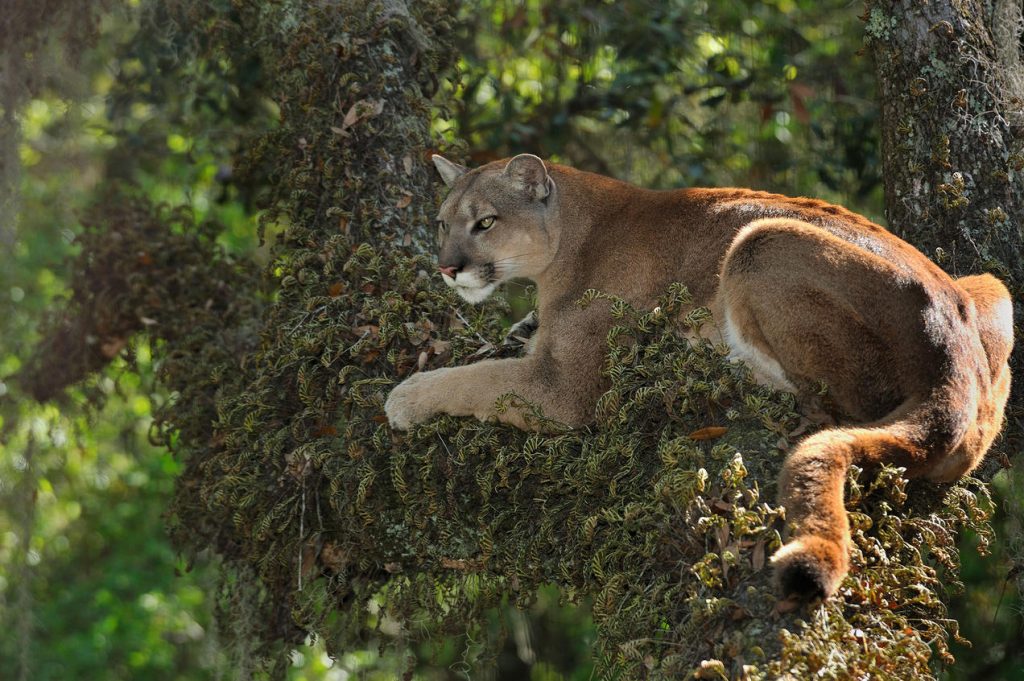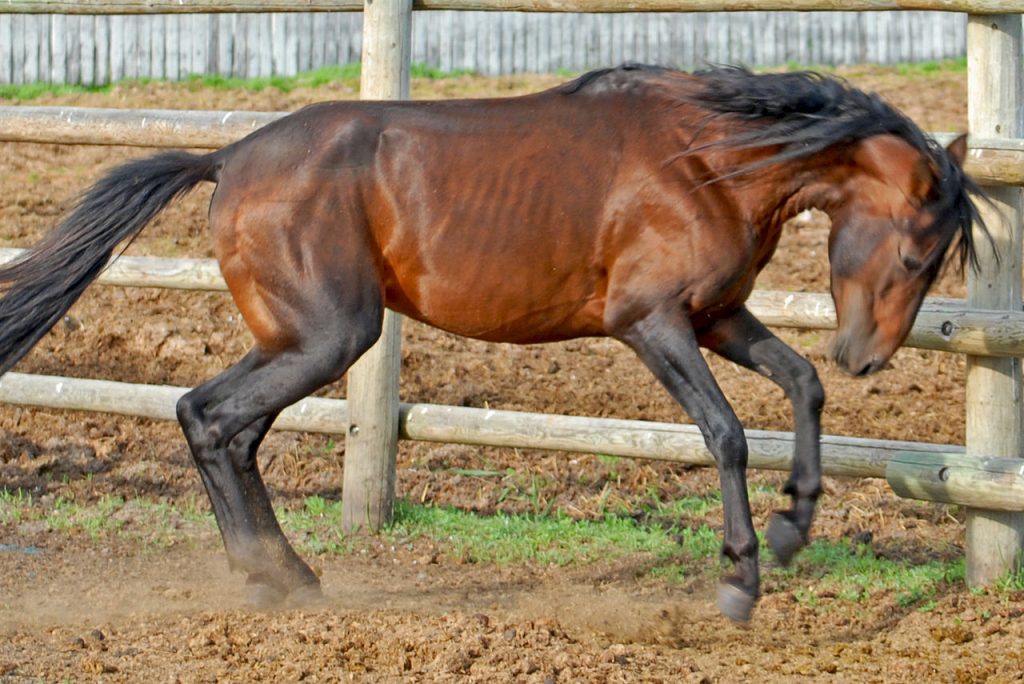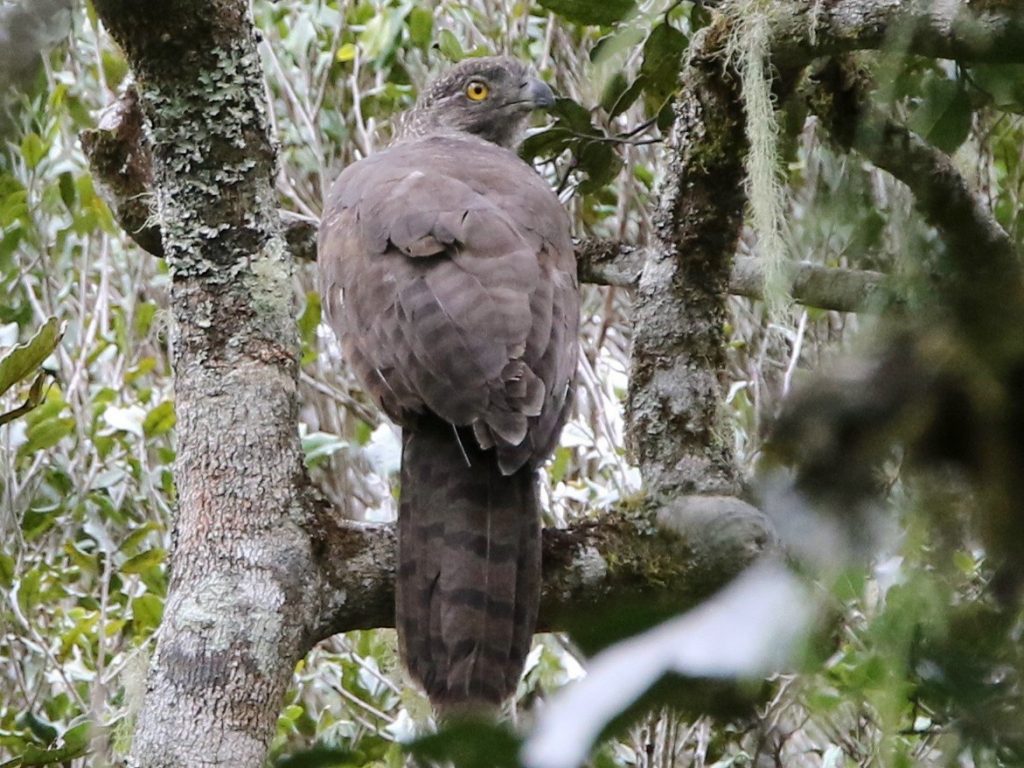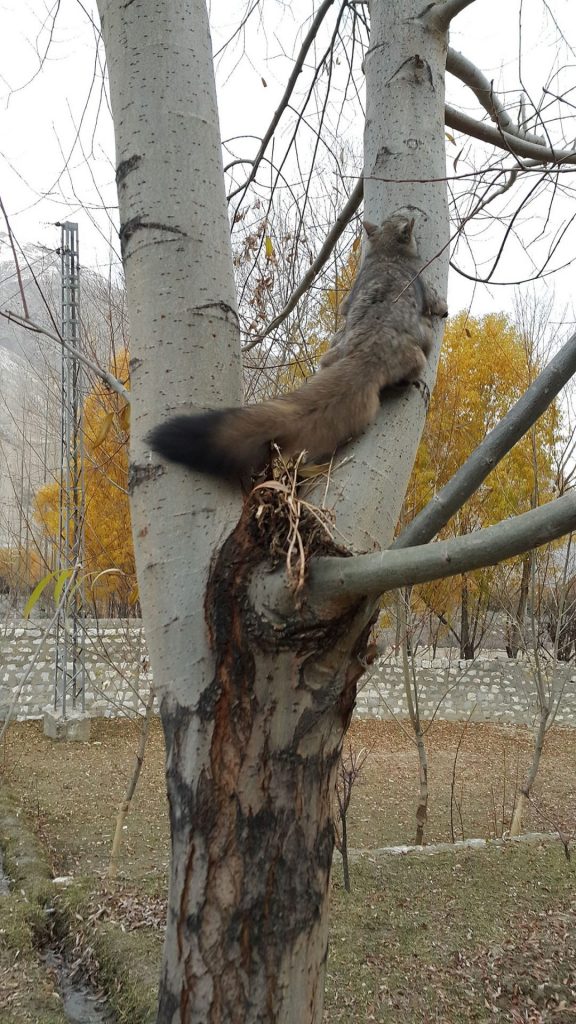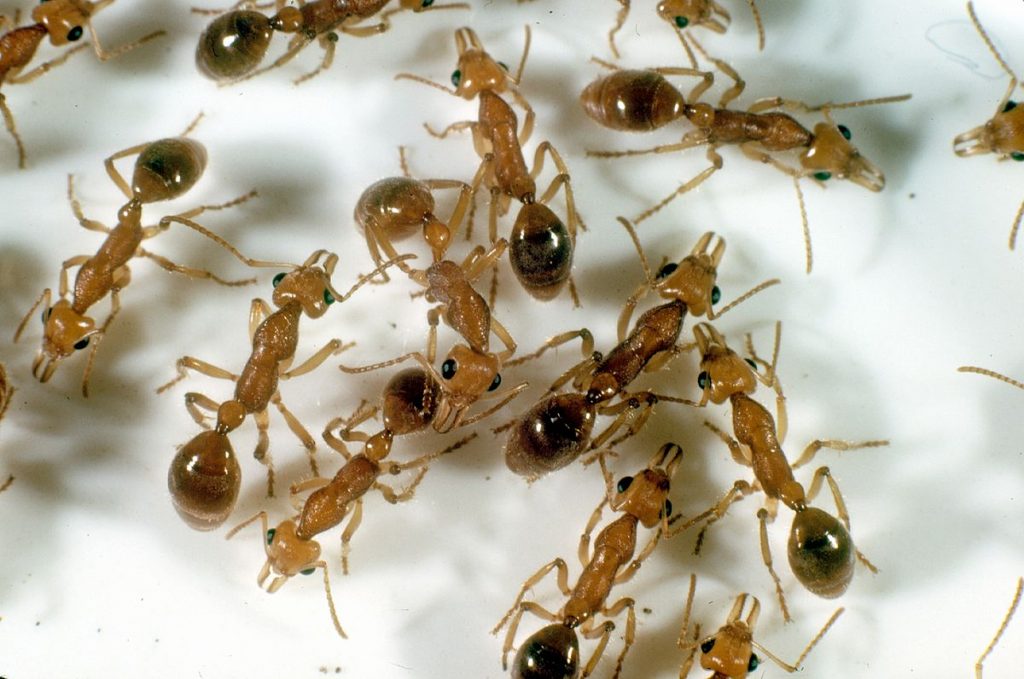Think about this, though. What if that isn’t really the case? Is it possible that an animal that had previously been declared extinct can come back? Brace yourself, because it is definitely possible, and we have seen so many animals that have miraculously come back from the brink and re-established themselves as a species.
Are you ready to see some of these amazing animals? We have scoured the globe and discovered some remarkable cases of creatures who had previously been classified as extinct, but now…they are back!

These Magnificent Animals Have Come Back
Huila Stubfoot Toad
The Huila Stubfoot Toad is the first creature on our list. It was thought to be extinct for many years because no one had seen this amphibian in the wild for many years. There are two populations that have been noted in recent times, one in northern Colombia and one in southern Colombia.
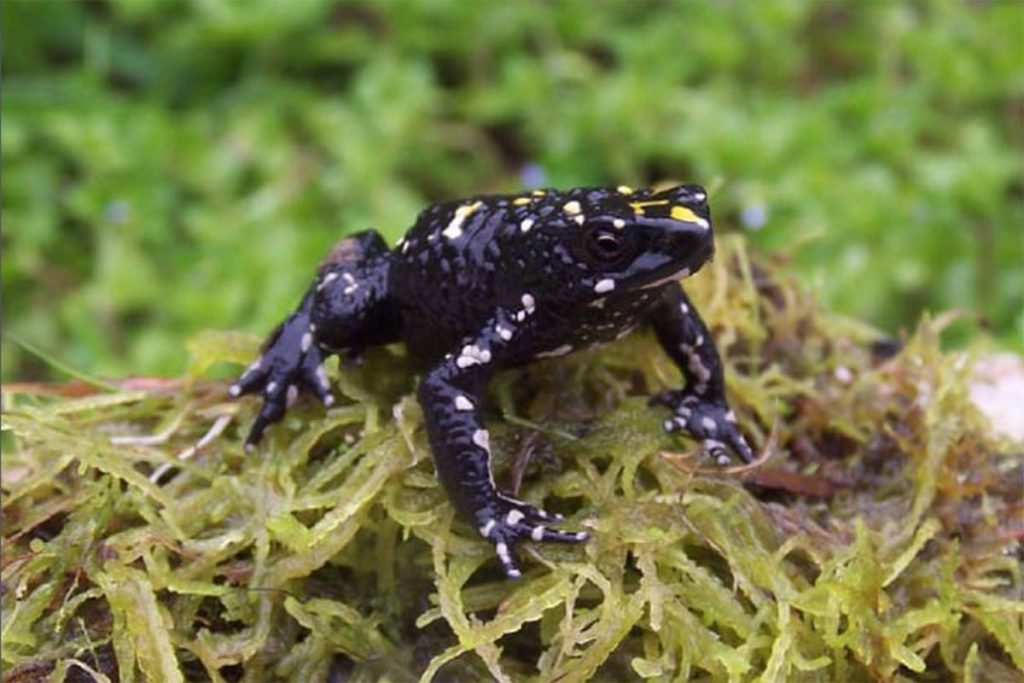
Huila Stubfoot Toad
This toad only lives in Columbia, and the last time one was seen was in 2006. This was a specimen from the northern population. The last time a specimen was seen in the south was 1992. Currently, this toad is listed as critically endangered.
Monito Del Monte
This sweet looking marsupial was thought to be extinct for not just a few years, but for millions! This creature looks like a little monkey, and it was first discovered alive in the late 1890s. The Monito Del Monte lives in Argentina and Chile.
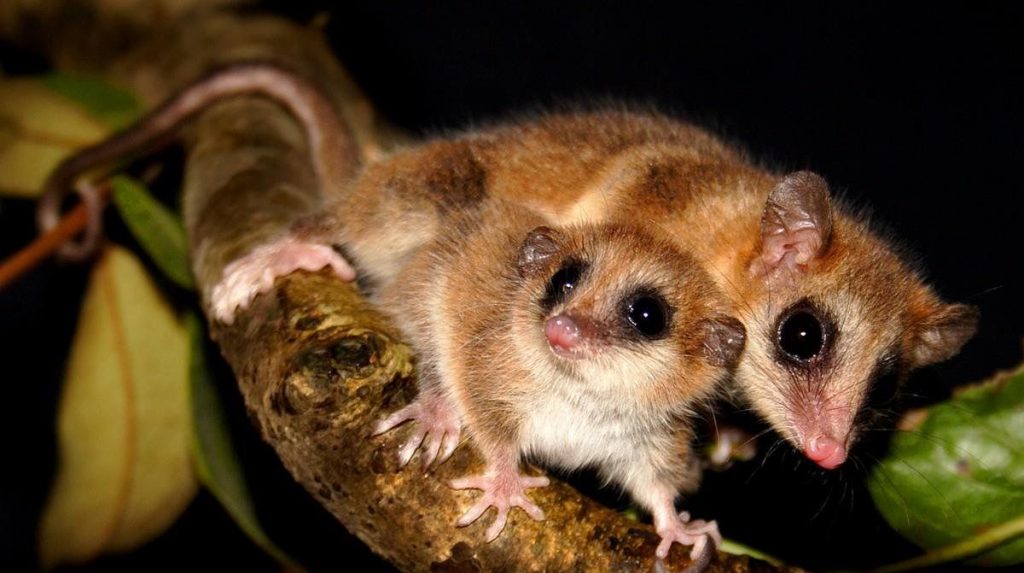
Monito Del Monte
This little guy is known as a “living fossil,” and it is believed to be the only living species in the Microbiotheria order. Currently, the Monito Del Monte is listed as “Near Threatened,” which shows that the species has come back well. However, they are still in danger due to habitat loss.
Black-Footed Ferret
First declared extinct in 1972, the Black-Footed Ferret has a great comeback story. Thanks to conservation efforts, however, there are now more than 1000 estimated to live in the wild, and they are safely being cared for in zoos.
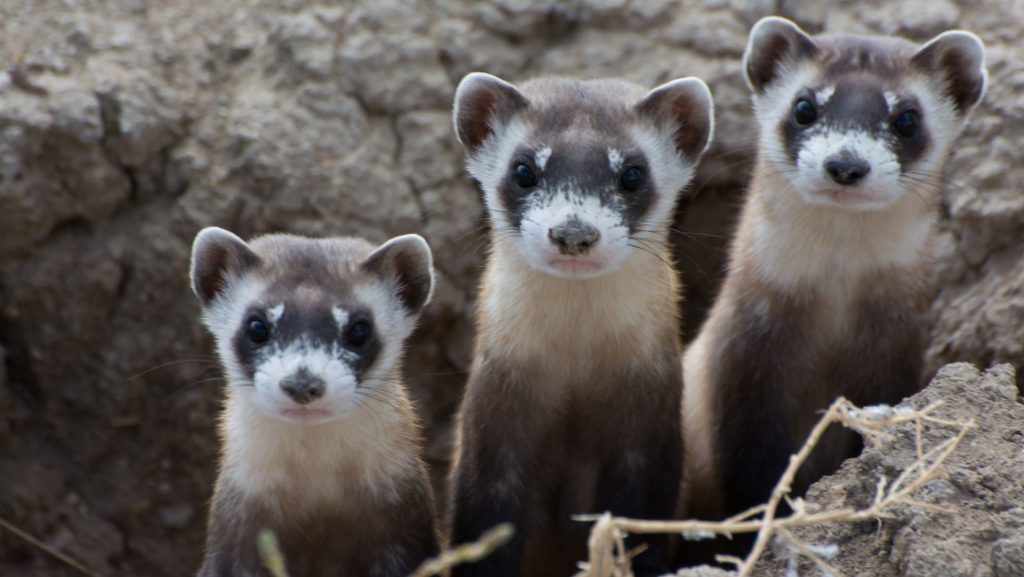
Black-Footed Ferret
This creature was declared “Extinct” until a dog caught one in 1981 and brought it back to its owner. Currently listed as “Endangered” since 2008, there is great hope that the Black-Footed Ferret can, once again live happily and healthily in the plains of North America.
Glass Sea Sponge
We all know what a sea sponge is, and most people think that they are found throughout the Earth’s oceans in abundance. However, this is not true. All sea sponges are threatened, but one type, the glass sea sponge, was long thought to be fully extinct.
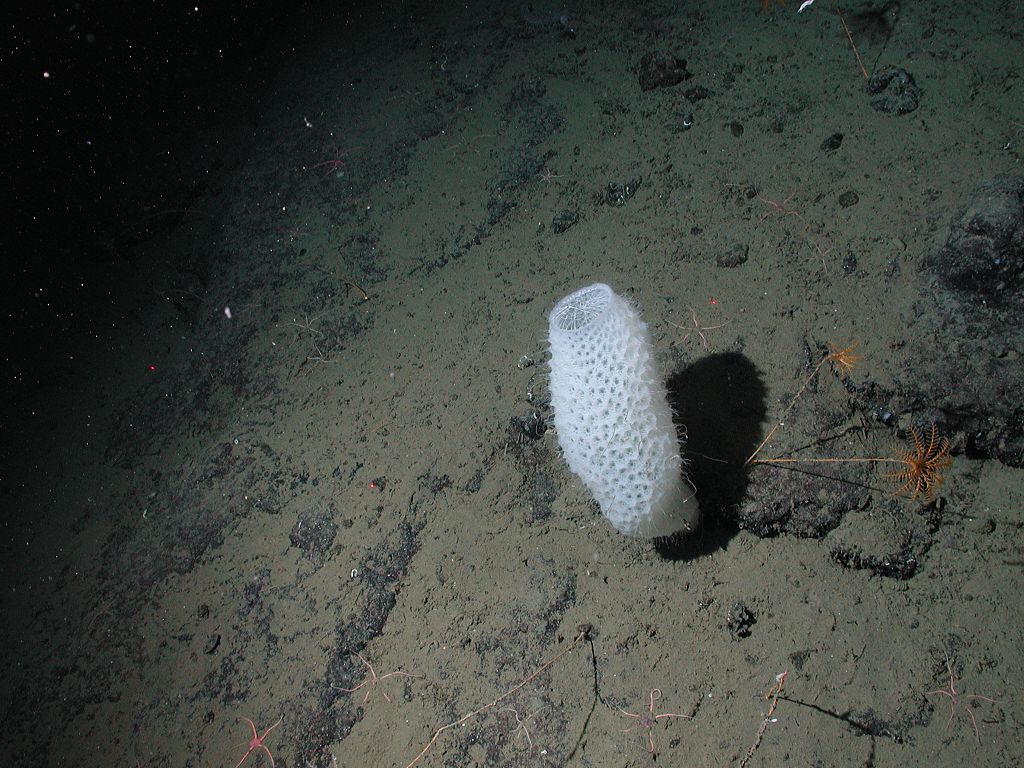
Deep Sea Glass Sponge
It wasn’t until 1987 when a team was researching the deepest parts of the ocean around British Columbia that they were once again found. At first, researchers thought that they might only be fossils, but a later expedition in 1999 showed that deep sea glass sponges are actually thriving.
Gracilidris
Gracilidris is a type of ant that was thought to have been extinct for 15 to 20 million years! However, in 2006, these insects were discovered once again in Brazil, Paraguay, and Argentina. The ant is small, and it lives in colonies close to the surface of the soil.

Gracilidris
Because we believed that this insect was extinct for millions of years, not much is known about them other than where they live. These ants are small and thin, as compared to other ants, and hopefully additional research can tell us more about them.
Coelacanth
The Coelacanth is another “living fossil,” and they were thought to have become extinct more than 65 million years ago. However, they are alive and well, living deep in the ocean. They are huge and can grow longer than 6 feet in length.
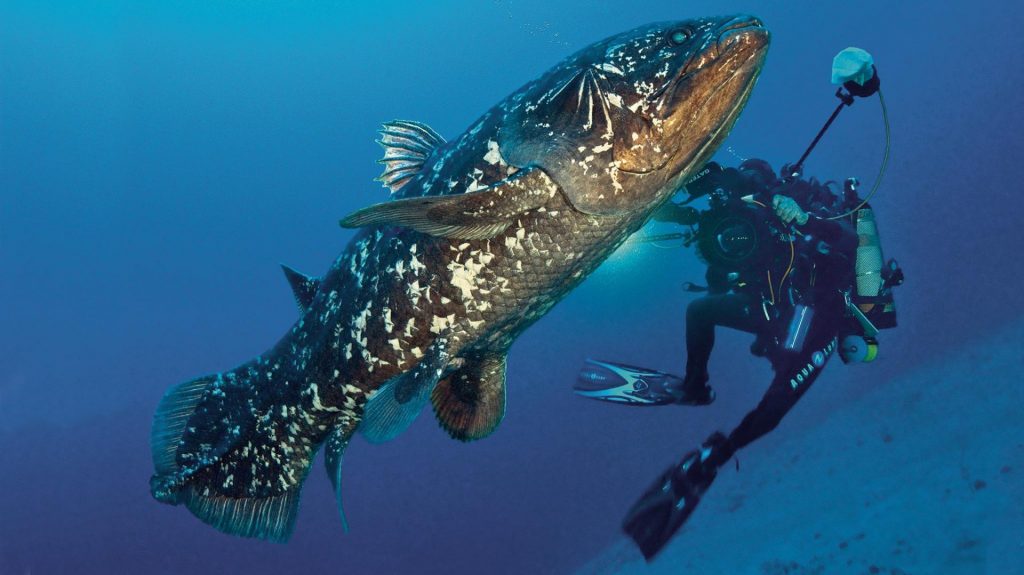
Coelacanth
The Coelacanth was rediscovered in the 1930s, and since then have been seen often. Some species of Coelacanth have a strong population, but others are still listed as “Critically Endangered.” It is thought that one species, L. chalumnae, has less than 500 left in the wild.
Pinocchio Lizard
You can probably guess why this creature is called the Pinocchio Lizard! This lizard was first discovered in 1953, and scientists collected six specimens. Unfortunately, all of them were male, and they were unable to breed. After that, they were rarely seen in the wild.
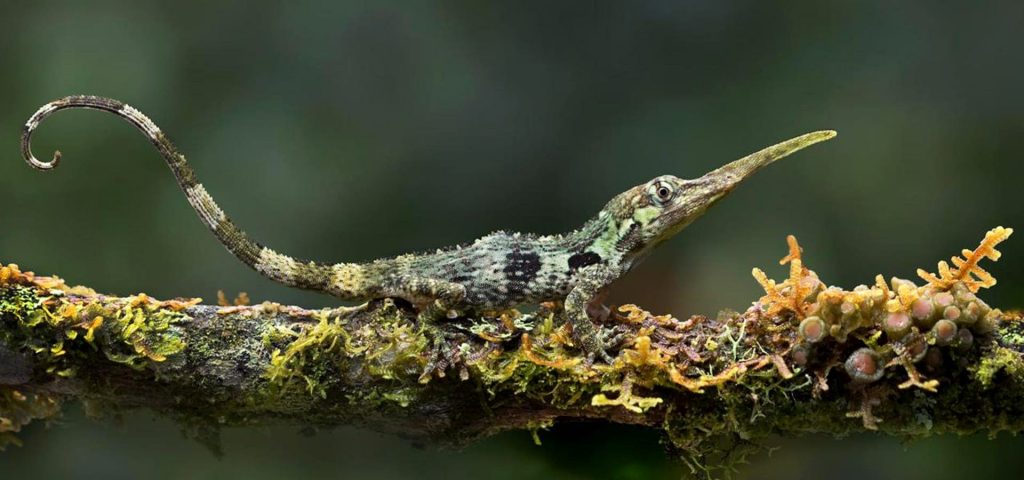
Pinocchio Lizard
For 50 years, there were no Pinocchio Lizard sightings, so it was thought to be extinct. However, in 2005, it was reported that one was seen, and in 2013, a research expedition in Ecuador once again found this long-nosed anole.
Goblin Shark
The Goblin Shark is a rare shark that lives in the deepest parts of the world’s oceans. Because it is so rare, many believed that it was extinct, but this is not the case. In fact, there isn’t a lot of concern that the Goblin Shark is going anywhere, any time soon.
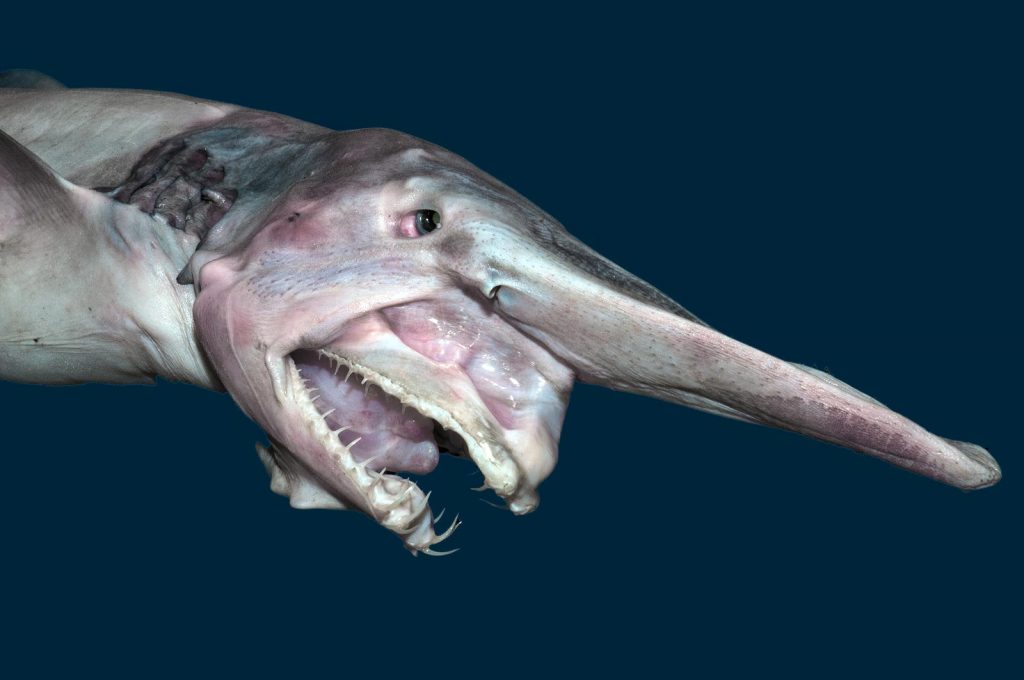
Goblin Shark
There are a lot of Goblin Sharks out there, according to estimates. But, because they live so deep in the ocean, we humans rarely interact with them. Occasionally, one will wash up on shore or be caught up in a fishing net, but they are usually not seen by humans.
Dwarf Cloud Rats
Up until 2008, the last time a Dwarf Cloud Rat was seen was back in 1896. So, it was thought to be extinct. When researchers found one sitting in the canopy of a tree, however, new hope for this species was born.
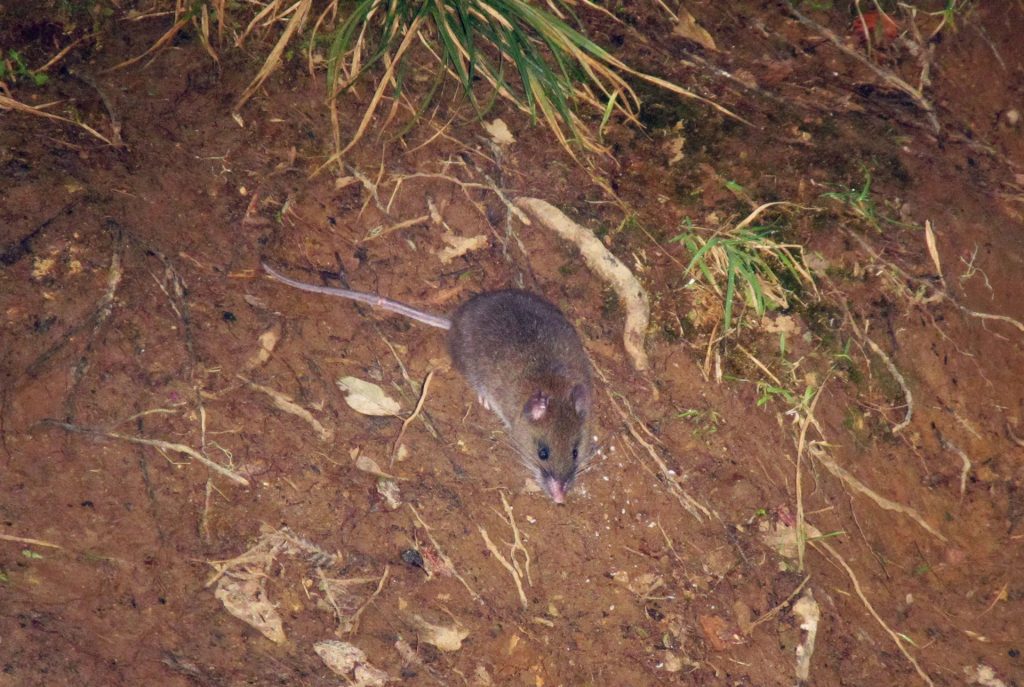
Dwarf Cloud Rat
The Dwarf Cloud Rat was found in the Mt. Pulag National Park in the Philippines, and a specimen was captured. It is not known how many more could be out there, but further research is planned for the future.
Purple Frog
The Purple Frog is an odd looking creature that was thought to be extinct. It was re-discovered in 2003, when researchers found the frog in Kerala, a state in India. Locals knew all about the frog, but the rest of the world was in the dark about it.
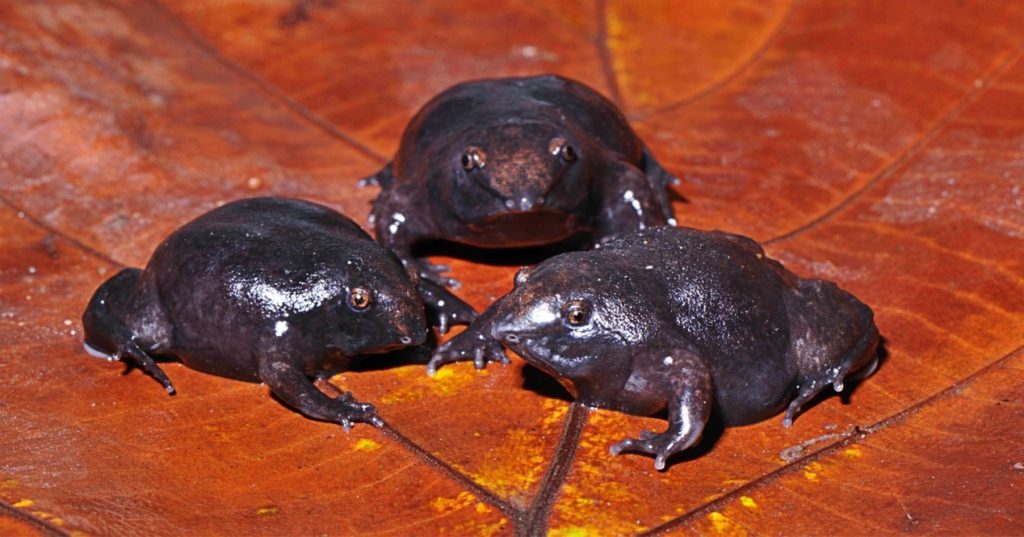
Purple Frog
The Purple Frog has a flattened body and lives in and around the banks of springs. The frog has a pointed nose and it is believed they use it for digging in the mud. Locals say the frog is noisy, too, sounding similar to the cluck of a chicken!
Arakan Forest Turtle
The Arakan Forest Turtle is one of the rarest turtles in the world. Native to the hilly areas of Myanmar and Bangladesh, the turtle was first found in 1875, but then thought to be extinct until many years later when researchers began to notice them in the illegal Chinese pet trade.
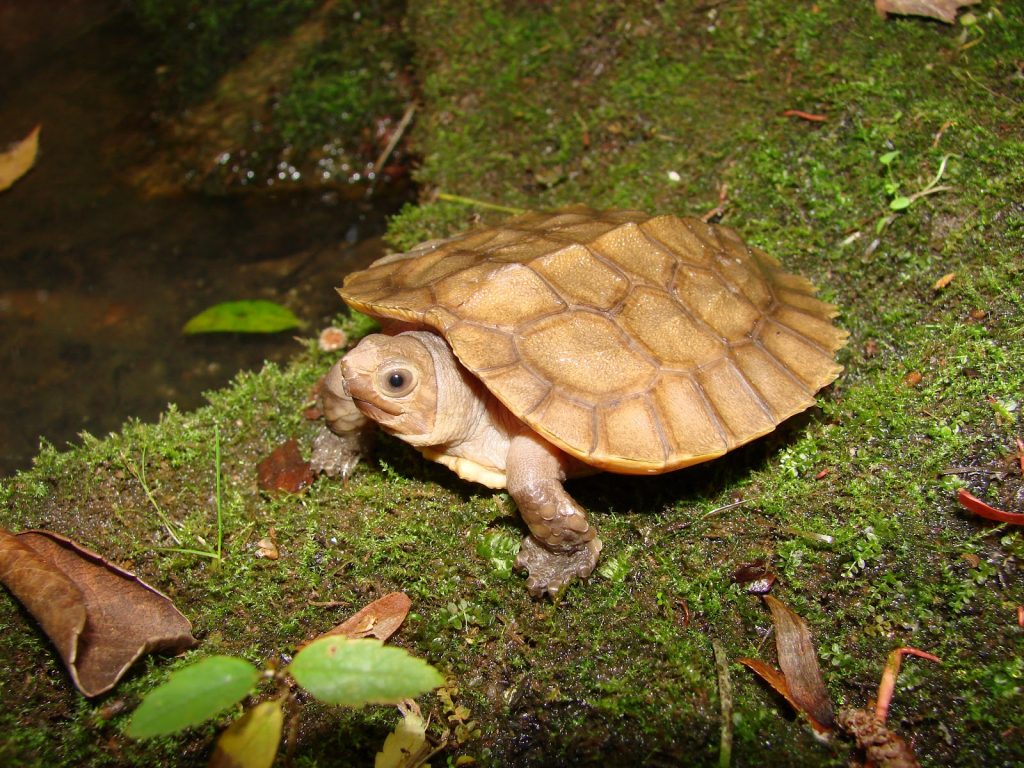
Arakan Forest Turtle
Today, the pet trade is still an issue for the Arakan Forest Turtle, and they are disappearing from the wild. Currently, they are listed as “Critically Endangered,” and there are efforts to plan a conservation project.
Giant Palouse Earthworm
The Giant Palouse Earthworm was first discovered in the 1890s, but once it was noted, there were only four official sightings of this worm until 2010. That year, a research study was conducted and more worms were found. They are currently listed as “Vulnerable.”

Giant Palouse Earthworm
There were two new sightings of the Giant Palouse Earthworm in 2012, and they were sent to the University of Iowa to be studied. Many believe the worm is more endangered than it is classified as, but there are no plans to change its classification at this time.
Chacoan Peccary
The Chacoan Peccary is a pig-like creature that is native to Bolivia, Paraguay, and Argentina. Originally, this critter was thought to be extinct in 1930. However, in 1971, the Chacoan Peccary was seen again. The locals saw the animal a lot, but it wasn’t known to researchers until then.
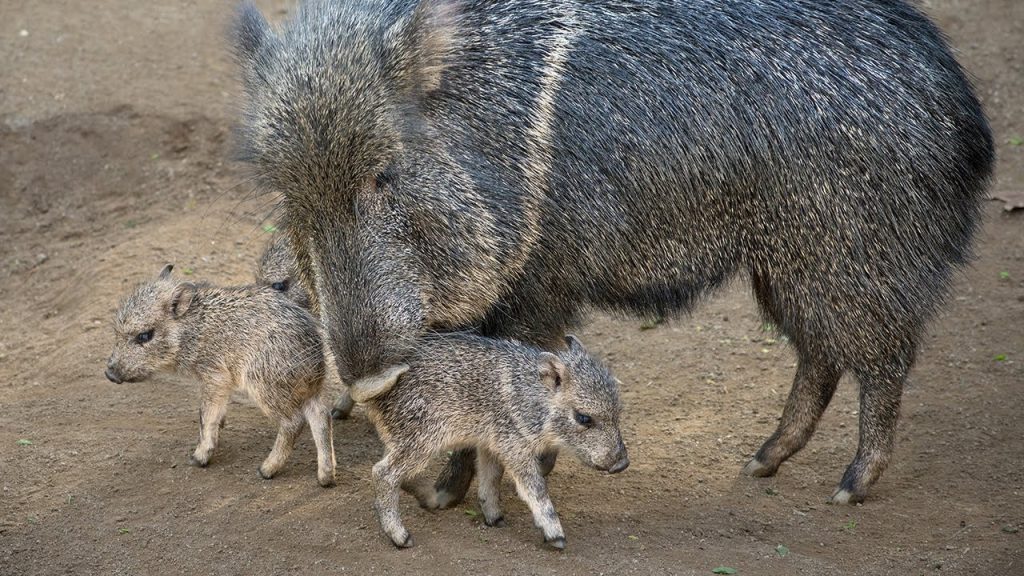
Chacoan Peccary
Today, the Chacoan Peccary is listed as “Endangered,” but zoos in both the US and in Europe are working to ensure its survival. Breeding programs are in motion, and there are also some nature reserves in its native lands.
Kashmir Musk Deer
Native to areas like Nepal, India, Afghanistan, and Pakistan, the Kashmir Musk Deer was thought to be extinct back in 1948. It wasn’t until 2009 that a noted sighting was recorded. In fact, three animals were found during a survey, showing that they were still around.
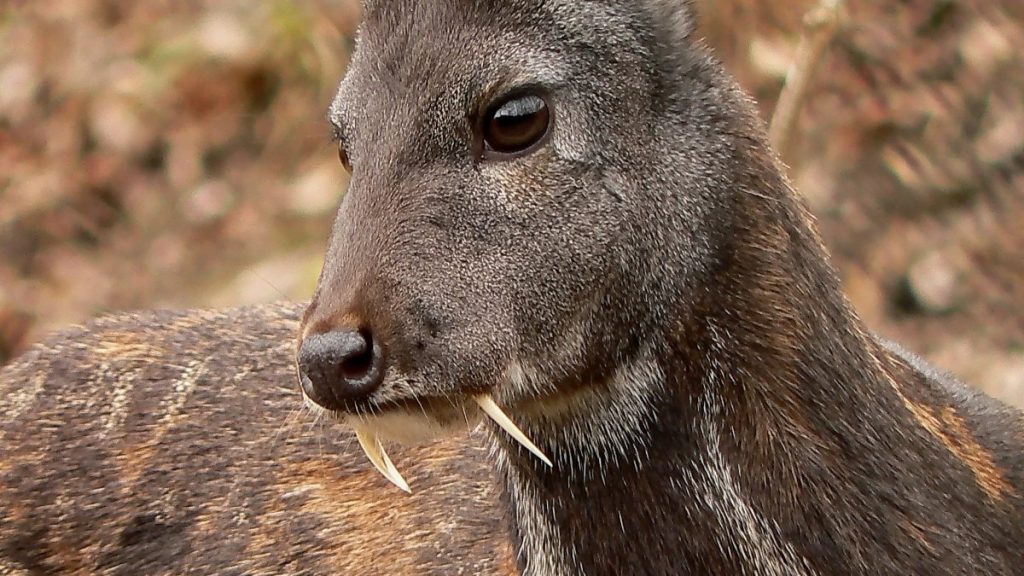
Kashmir Musk Deer
Currently listed as “Endangered,” the Kashmir Musk Deer is a common target for hunters thanks to its musk glands, which are highly prized in the area. The fangs give the appearance that these deer are vicious, but they are herbivores.
Sharks
Oddly enough, sharks also have a spot on our list of animals that have come back from extinction. Part of the reason for this is that many shark species simply don’t have a lot…if any…interaction with humans. So many are mistakenly believed to be extinct.
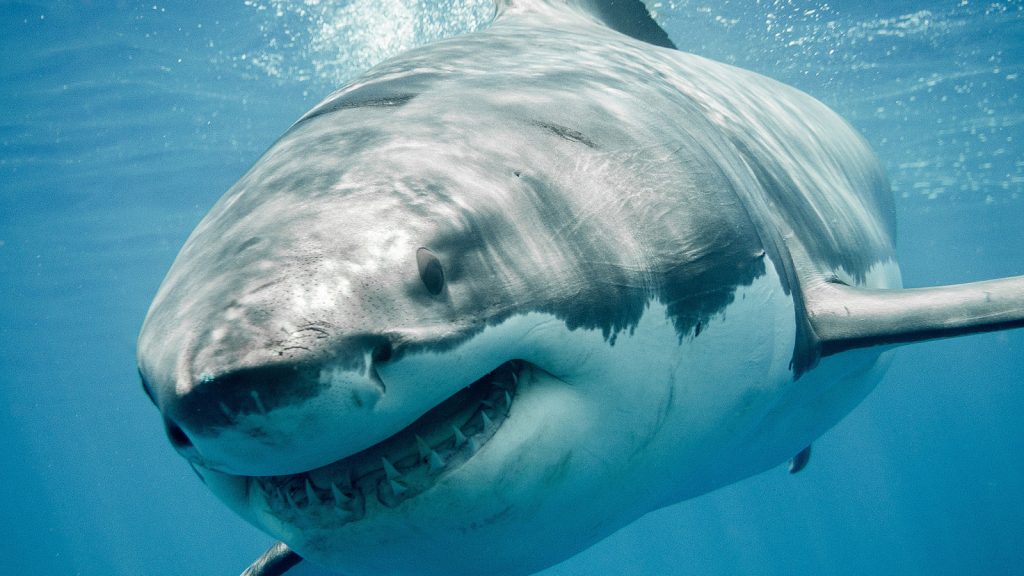
Sharks
You might not realize it, but sharks have been around for millions of years, and over time, several species have been driven to the brink of extinction…and many certainly were listed as extinct, but then discovered once again.
Jerdon’s Tree Frog
Prior to its rediscovery in 2007, Jerdon’s Tree Frog had not been seen in the wild in more than 100 years. It is found in the northern areas of India, and it is a bizarre little frog with weird behaviors.
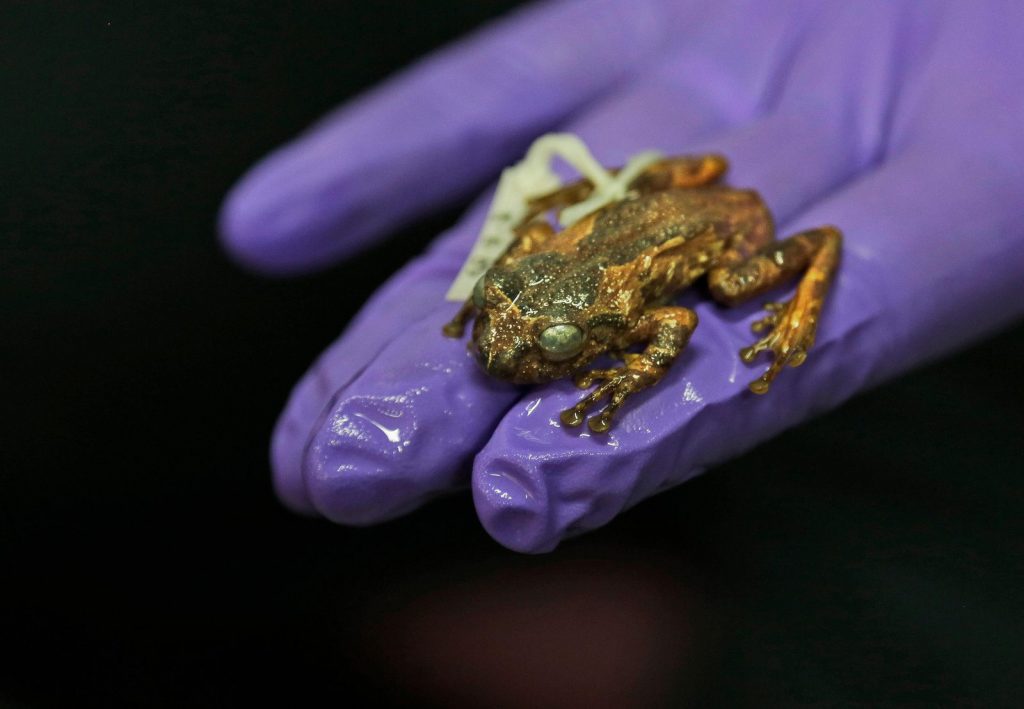
Jerdon’s Tree Frog
One of the bizarre things that scientists have found about the Jerdon’s Tree Frog is that the tadpoles eat the eggs that the mother frog lays. So, essentially, they are eating their brothers and sisters for nourishment and growth.
Pygmy Tarsier
The Pygmy Tarsier is a tiny, nocturnal primate that was believed to have become extinct back in the early 20th century. However, in 2000, one was accidentally caught in a rat trap by a scientist, and the adorable Pygmy Tarsier was once again introduced to the world.
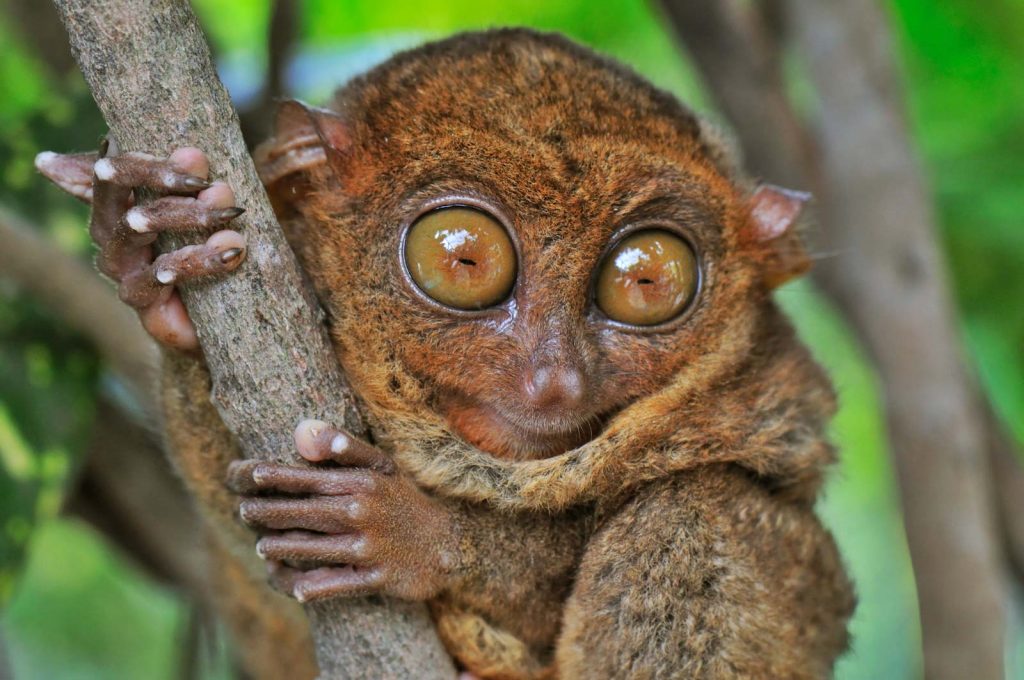
Pygmy Tarsier
The scientists were able to capture three of them, two males and a female, and attached collars to them so that their movements could be tracked. We don’t know how many are still alive in the wild, but hopefully, the population is growing.
Crested Gecko
The Crested Gecko was first discovered in New Caledonia in 1866 by a French zoologist. Soon after this, however, it was thought to be extinct. It wasn’t rediscovered until 1994, and now, it is considered to be “Vulnerable” in the wild.
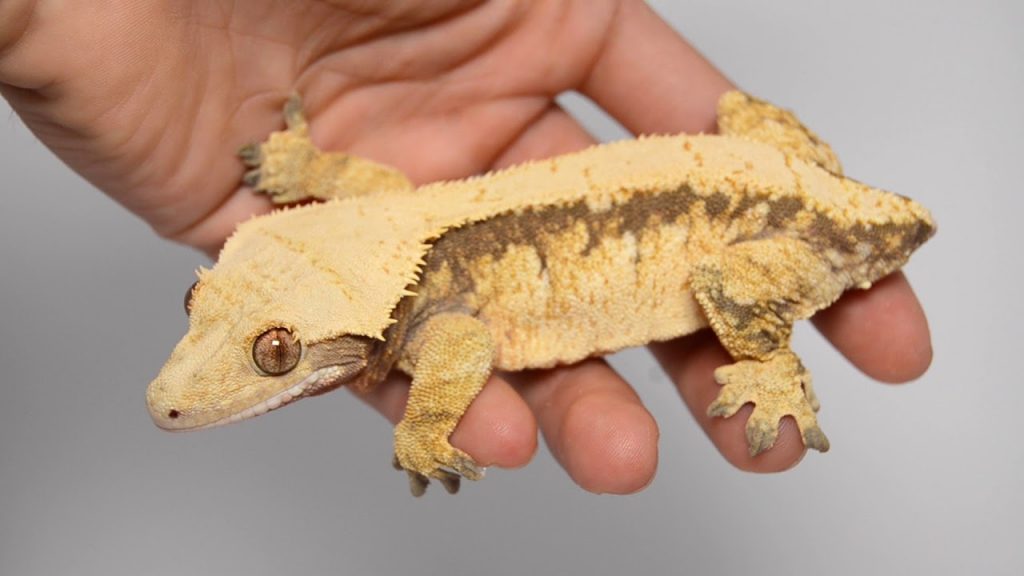
Crested Gecko
Though the Crested Gecko is “Vulnerable” in nature, it is a popular choice in the pet trade. They can live a long time, sometimes even 20 years or more. They are easy to care for and found in pet stores across the US and Europe.
New Guinea Big-Eared Bat
The New Guinea Big-Eared Bat is a winged mammal that was believed to have become extinct back in 1890. It wasn’t until 2012 that scientists realized they were still around, and even that specimen wasn’t confirmed as a New Guinea Big-Eared Bat until 2014.
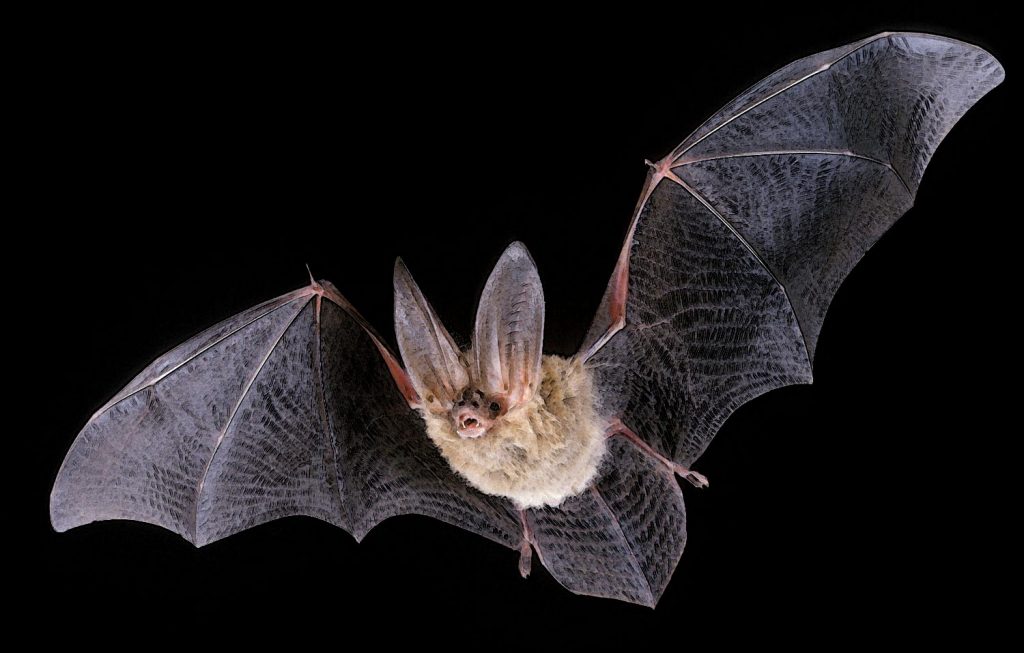
New Guinea Big Eared Bat
Currently, the New Guinea Big-Eared Bat is listed as “Critically Endangered,” and possibly extinct in the wild. It is certainly at risk of becoming extinct, but as of now, conservation efforts are in the works to try to keep the species going.
Cuban Solenodon
The Cuban Solenodon is a unique looking mammal and since it was first discovered in 1861, only 36 of them had ever been caught. So, by 1970, the species was thought to be extinct. By 1974, however, sightings occurred again.
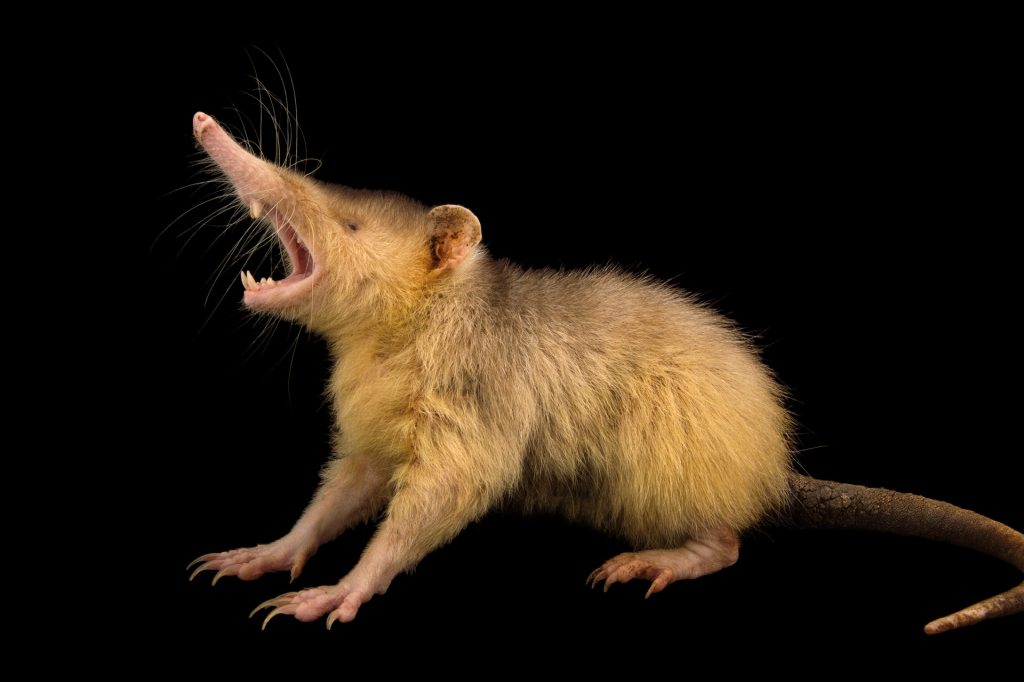
Cuban Solenodon
The Cuban Solenodon is only known to live in Cuba, and it has an odd trait: it is venomous. The venom, which comes with the saliva, can kill smaller animals, like lizards, and it has even been known to kill other Cuban Solenodons after a fight.
Bermuda Petrel
The Bermuda Petrel was believed to be extinct for more than 300 years. However, in 1951, 18 of them were discovered in Bermuda, and it became a symbol of the small island, and even appears on the currency of Bermuda.
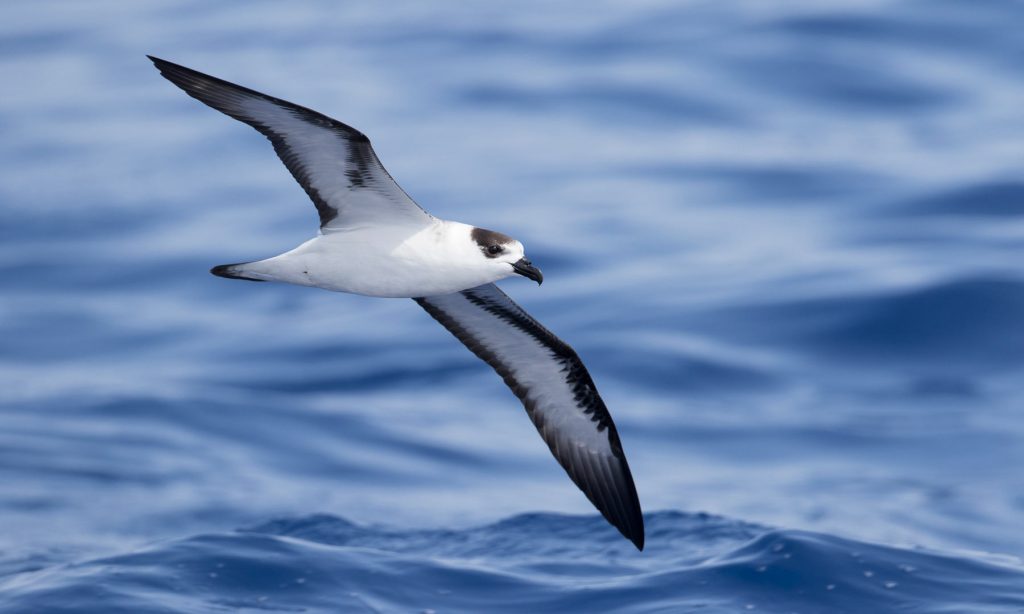
Bermuda Petrel
There are many conservation efforts going on to keep the Bermuda Petrel going strong. Currently, it is listed as “Endangered,” but hopefully, this species can move up to a more protected status, soon. Until then, the Bermudan government is working hard to keep populations in tact.
Black Kokanee
The Black Kokanee is a Japanese fish that was thought to be extinct in 1940 after the water it lived in became more acidic due to a hydroelectric project. However, in 2010, a population was found near Mount Fuji, and the fish was removed from the extinct list.
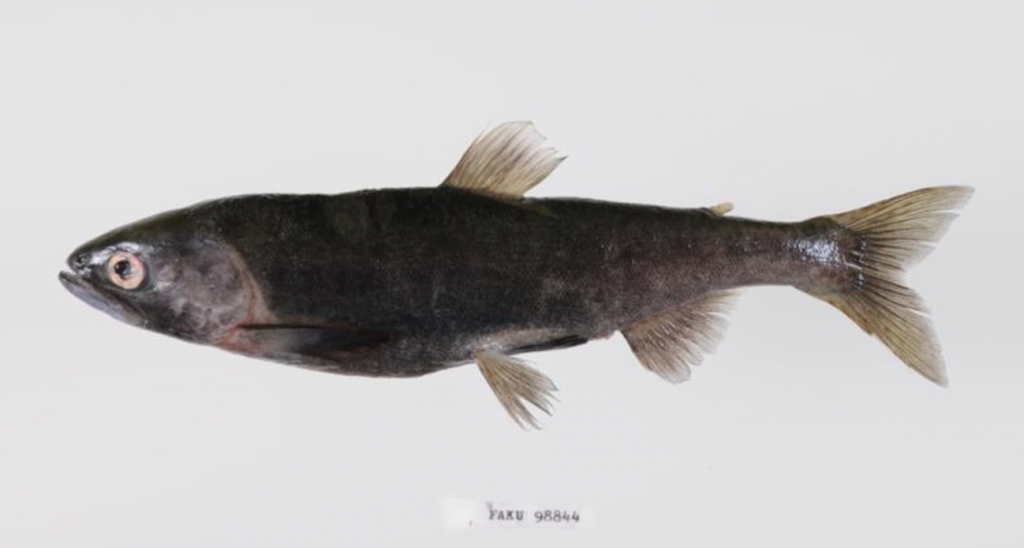
Black Kokanee
The Black Kokanee is a relative of the sockeye salmon, and though it is believed to be extinct in the wild today, there are still attempts to find the fish. Specimens are living and well in aquariums. Other species of Kokanee are going strong, just the black version is struggling.
Nelson’s Small-Eared Shrew
Nelson’s Small-Eared Shrew is a small mouse-like creature that is native to Mexico. It was discovered in 1894, and it was not recorded again for many years, thus, it was deemed to be extinct. It wasn’t until 2004 that the Nelson’s Small-Eared Shrew was seen again.
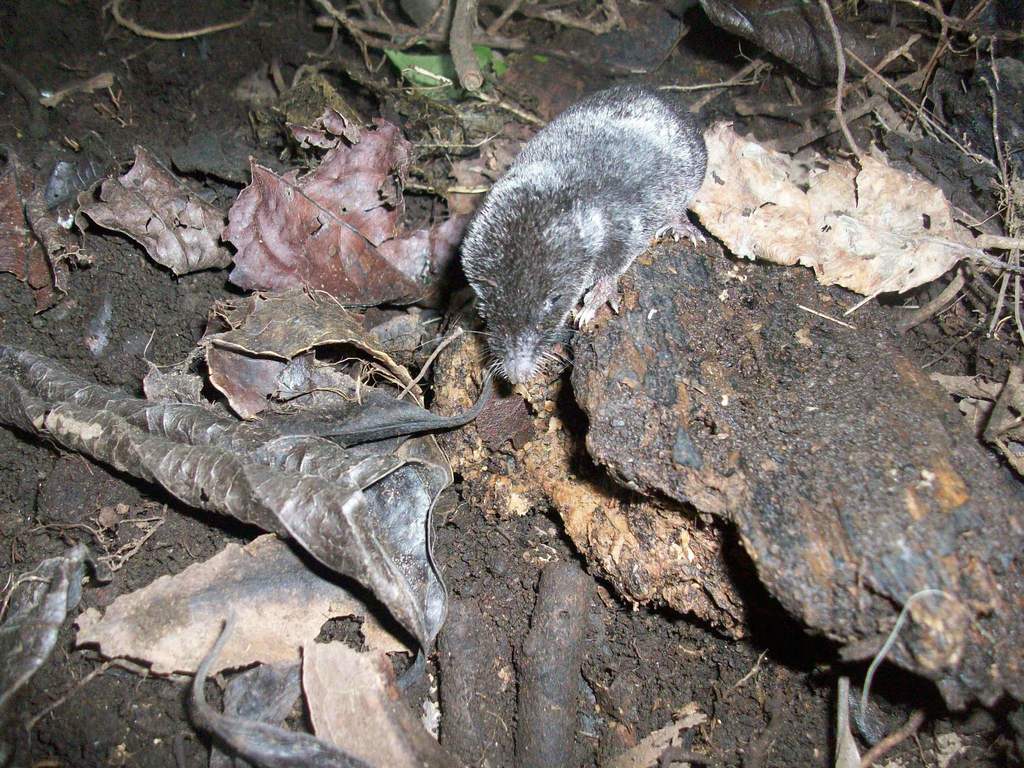
Nelson’s Small Eared Shrew
Currently listed as “Critically Endangered,” Nelson’s Small-Eared Shrew is currently only found in very small populations. It is one of the 100 most endangered species on the planet, and it is unknown how many are left.
Terror Skink
The Terror Skink was first discovered in 1876, but soon after it was thought to be extinct, as no specimens had been found. In 1993, however, it was discovered once again, and since then, the Terror Skink has been seen several times in the wild.
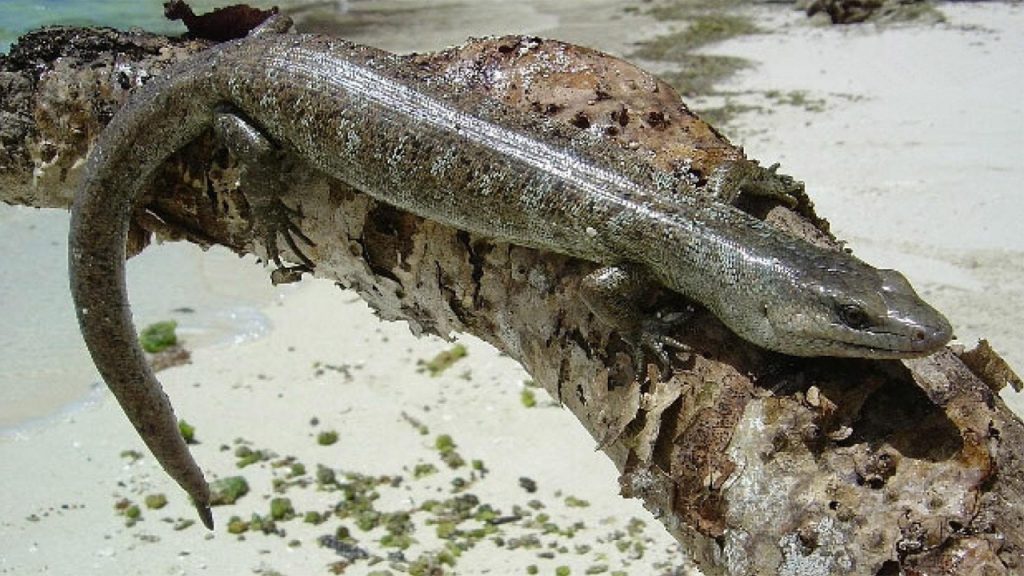
Terror Skink
Currently, the Terror Skink is listed as “Endangered,” and as far as we know, it is only found on a small island called Isle of Pines, located near New Caledonia. It is possible, however, that it is also living on other nearby islands.
Javan Elephant
The Javan Elephant was believed to be extinct until 2003 when researchers discovered that the subspecies was actually also found on the neighboring island of Borneo, which likely has saved it from total extinction. Today, the Javan Elephant doesn’t live in Java, but it does in Borneo.
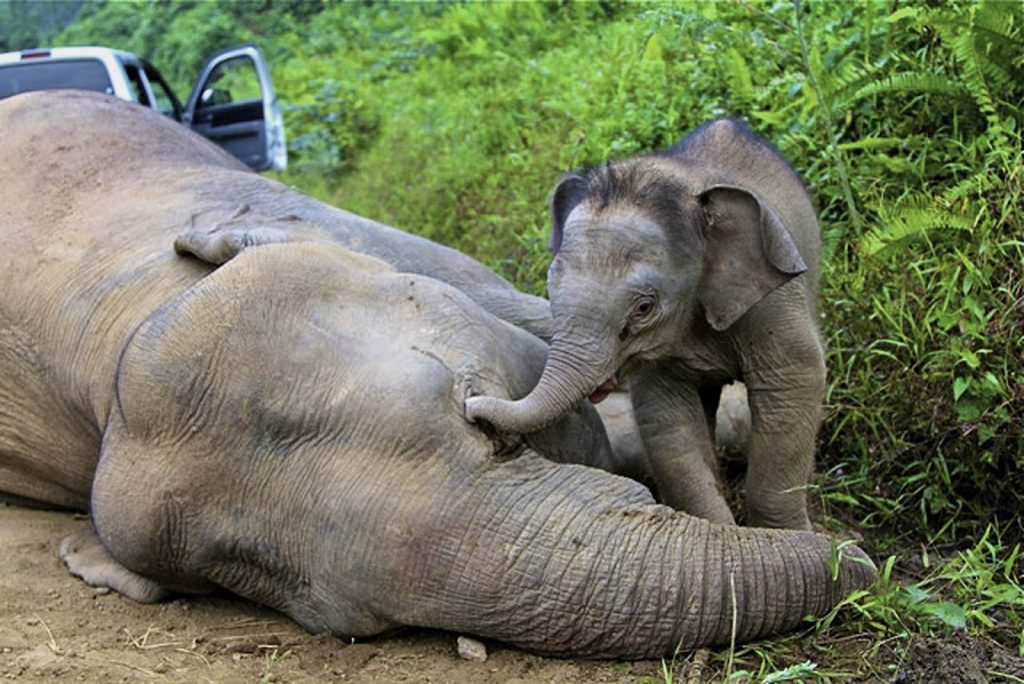
Javan Elephant
The Javan Elephant is much smaller than an African or Asian elephant, which is what most people think of when they think of elephants. But, they tend to eat a lot, and each one can eat over 300 pounds of vegetation each day.
Takahe
The Takahe was first found by Europeans all the way back in 1847 in New Zealand. By 1898, the final bird was captured, and it was believed that the Takahe was officially extinct. However, in 1948, the species was found again and officially came back from being extinct.
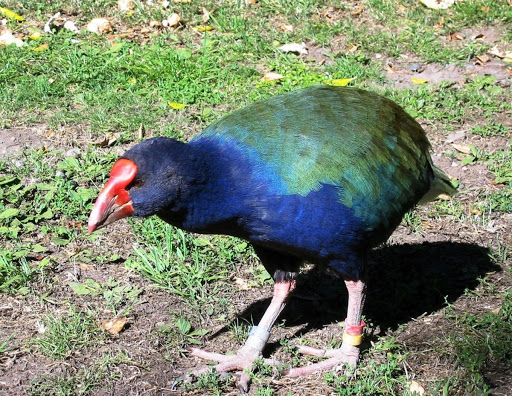
Takahe
Today, the Takahe has been upgraded from “Critically Endangered” to “Endangered,” and the government of New Zealand is working hard to keep this flightless bird going strong. Each year, the population rises by about 10%, which is a step in the right direction.
Jerdon’s Babbler
Jerdon’s Babbler is a small bird native to Bangladesh, Pakistan, and surrounding areas. Like many of the animals here on our list, Jerdon’s Babbler was thought to be extinct for decades until it was rediscovered. It was not seen from 1941 until recently.
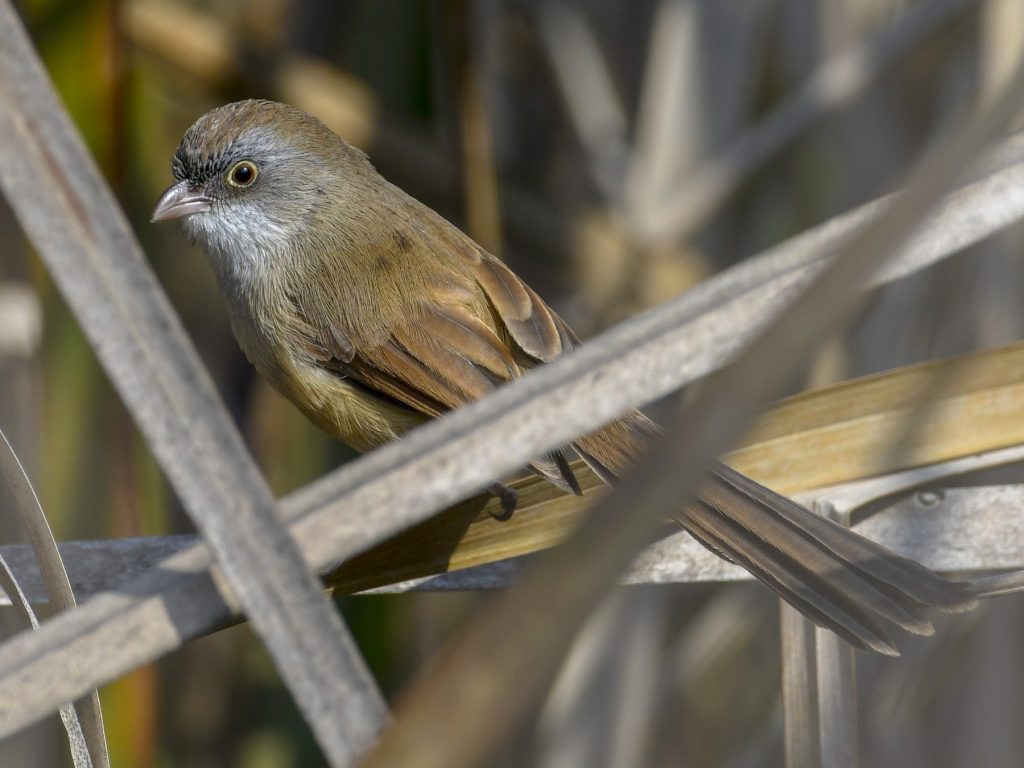
Jerdon’s Babbler
Currently, Jerdon’s Babbler is listed as “Vulnerable,” and it is believed that less than 10,000 of these birds exist in the wild. The population is also on the decline, which isn’t good news for the species. Hopefully, conservation efforts can help the Jerdon’s Babbler keep on keeping on.
The Lord Howe Stick Insect
The Lord Howe Stick Insect was thought to be extinct back in 1920, but it was rediscovered in 2001. It is said to be the rarest insect in the world, and there are only about 24 left in the wild, according to recent research.
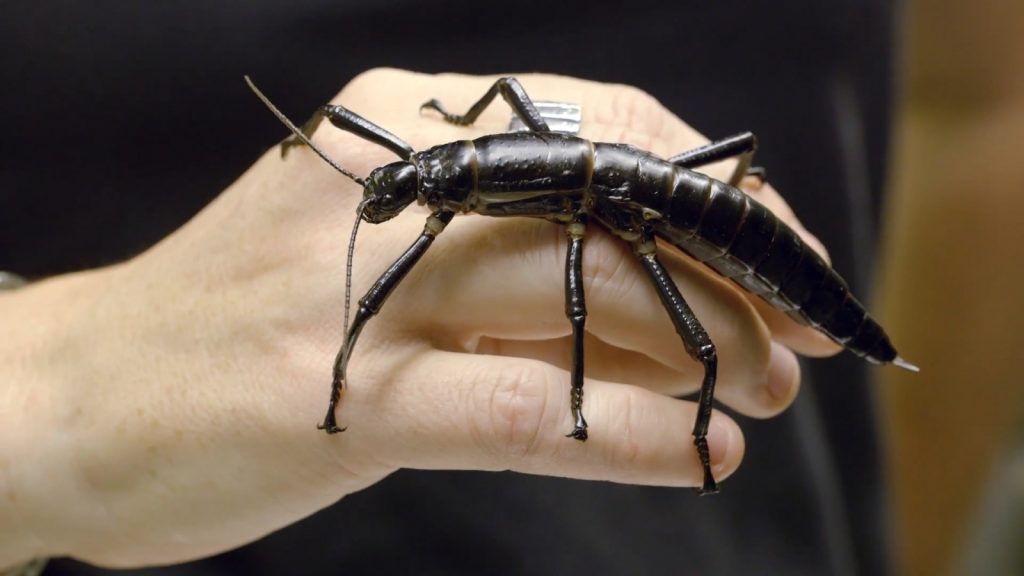
Lord Howe Stick Insect
The Lord Howe Stick Insect is listed as “Critically Endangered,” though they used to be seen in abundance on Lord Howe Island. It is believed that populations dwindled so quickly because of an introduction of black rats to the island, which ate most of the insects.
Omura’s Whale
Though still in existence, Omura’s Whale was thought to be extinct for a long time, as it is rarely seen by humans. This is a small, baleen whale that is native to the southern Pacific ocean. Over the past few decades, only a handful of sightings have occurred.
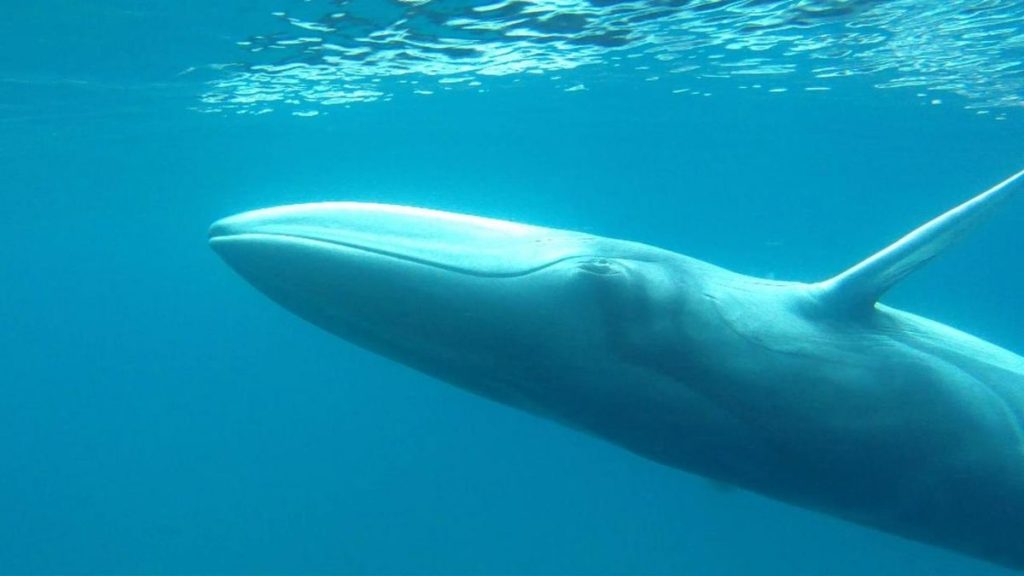
Omura’s Whale
It is not known how many specimens of Omura’s Whale is still in existence. The last known sighting was back in 2017, when the sailors saw an Omura’s Whale off of the coast of Sri Lanka. There is hope that more sightings of the Omura’s Whale will occur.
Giant Squid
The Giant Squid is known to have been around for hundreds and hundreds of years and was even mentioned in the works of Aristotle. Though many sightings continued through the 19th century, for many years, the Giant Squid was thought to be extinct, and even mythical.
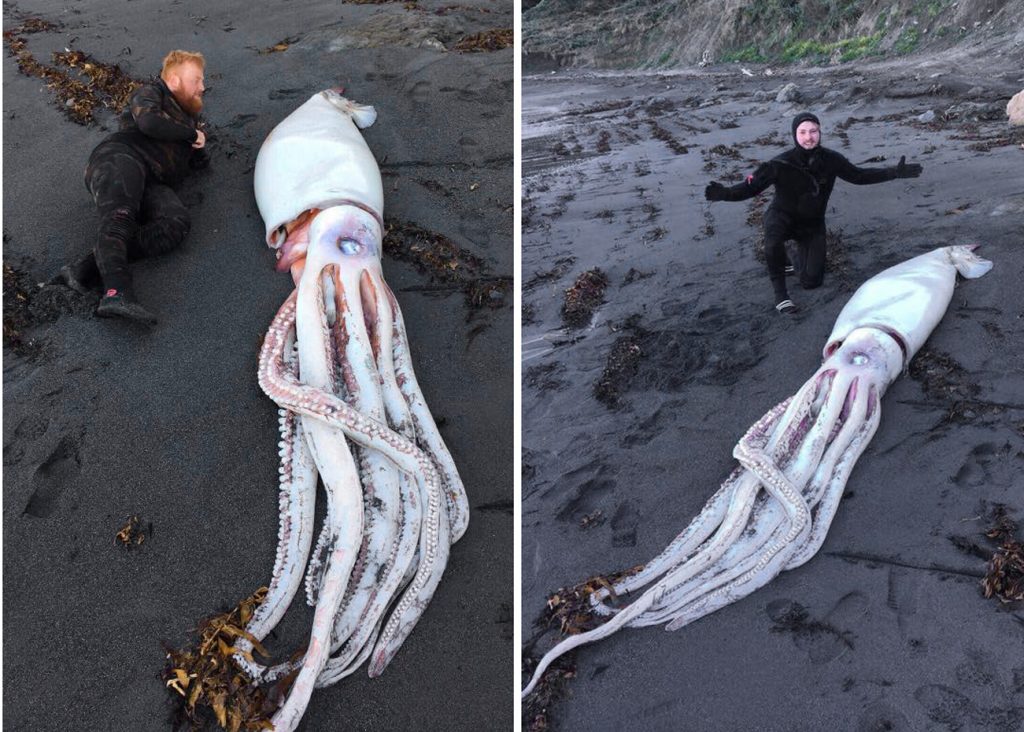
Giant Squid
In modern times, the first Giant Squid to be seen in the wild was in 2002. In 2005, one was found encased in ice, and the Melbourne Aquarium in Australia paid $100,000 for it. Currently, it is believed that there are around 700 Giant Squids in the wild.
Clarion Nightsnake
The Clarion Nightsnake was first discovered in the 1930s in Mexico, but after its discovery, no more were seen for many years. It wasn’t until 2013 when 11 of them were found by a group of researchers. The snake only lives on a very small island off the coast of Mexico.
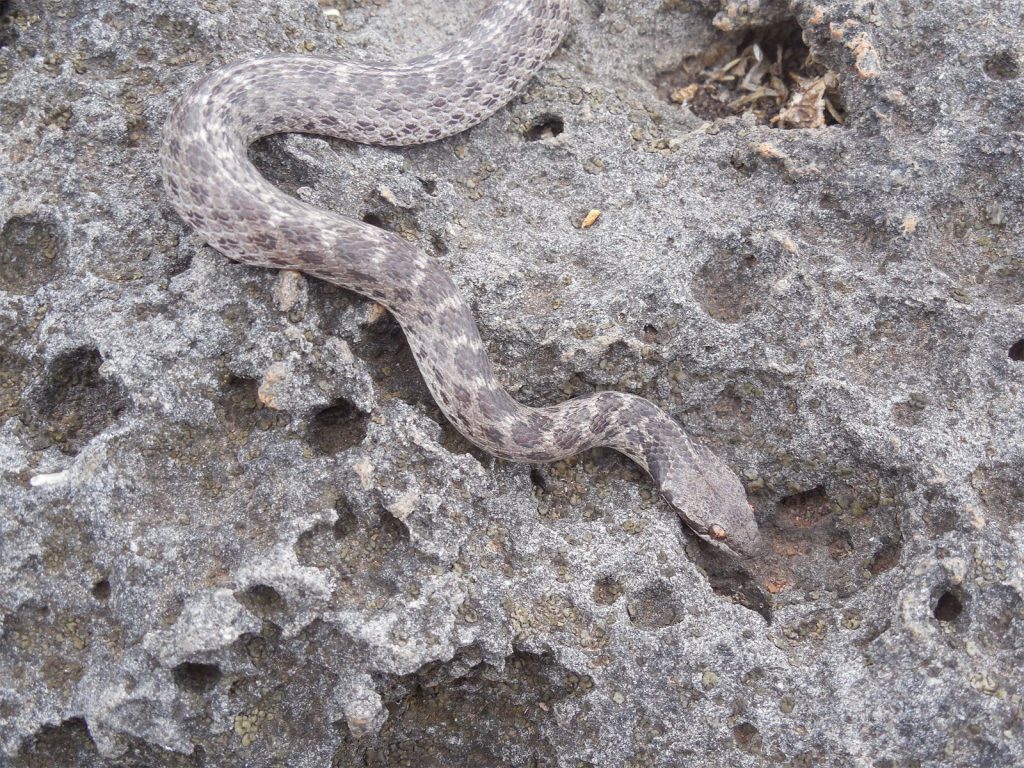
Clarion Nightsnake
Though there is a solid population on the island now, one that could be viable, there are a lot of things going against it. For instance, the island has a lot of feral cats, which ultimately hunt and eat the snakes.
Gilbert’s Potoroo
Gilbert’s Potoroo is the most endangered marsupial in Australia. In fact, it was believed to be extinct until it was re-discovered in 1994. There are two known populations of Gilbert’s Potoroo, but it is unknown how many single specimens are still living in the wild.
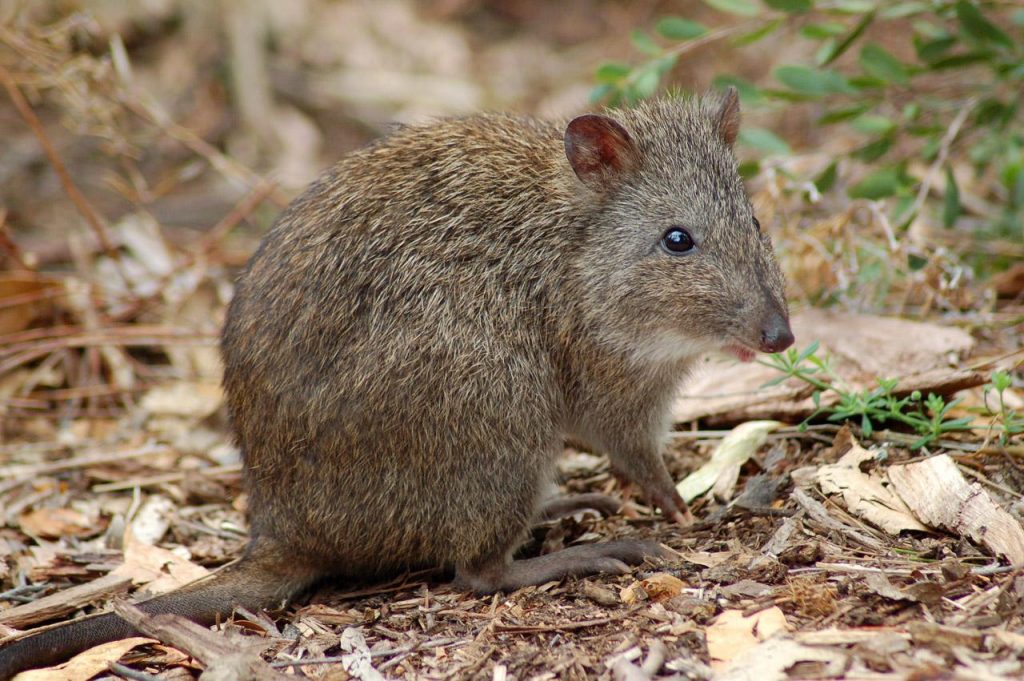
Gilbert’s Potoroo
Gilbert’s Potoroo is currently listed as “Critically Endangered,” and there is a major effort to save the species. Known specimens were relocated from their native areas to Michaelmas Island, which was chosen because of a lack of predators. Hopefully, that is enough to save the species.
Ivory Billed Woodpecker
The Ivory Billed Woodpecker was thought to be extinct back in the 1940s. This was due to habitat destruction and hunting. Currently listed as “Critically Endangered,” there have been possible sightings of this large bird off and on since the 40s.
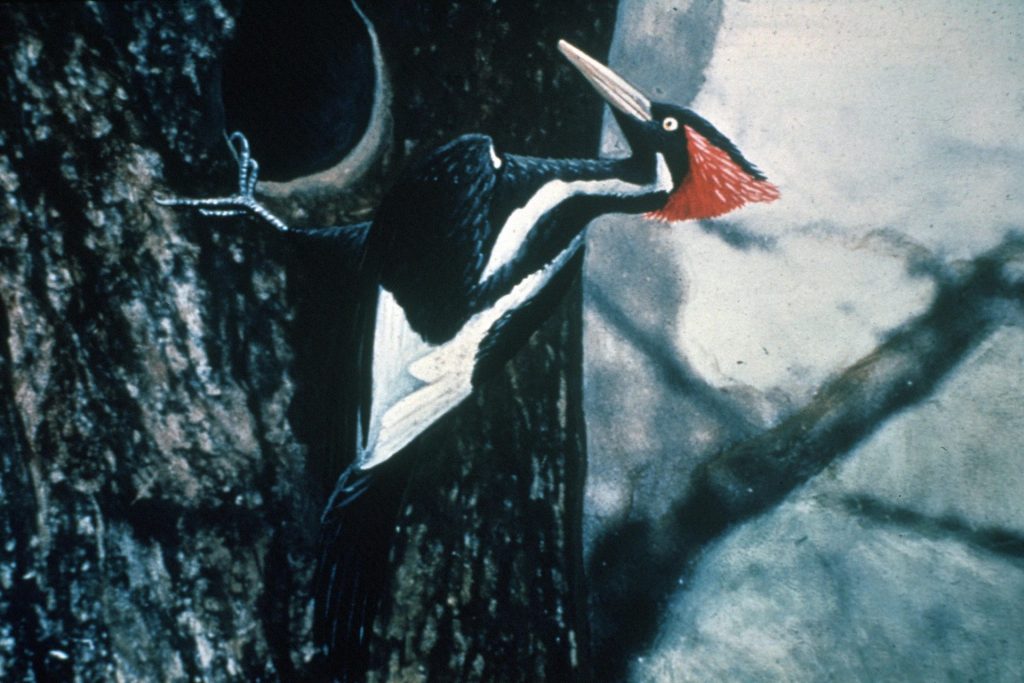
Ivory Billed Woodpecker
We don’t have any information about how many Ivory Billed Woodpeckers might still be in existence, but we do know that there are still possible sightings occurring in the Southeast US, specifically in Louisiana, Alabama, and Florida. Habitat building and restoration are done to help protect any remaining birds.
Eastern Quoll
The Eastern Quoll was declared extinct in 1960. It is an Australian marsupial, which was later discovered living, alive and well, in Tasmania, an isolated island off of the Aussie mainland. Today, the Eastern Quoll has been reintroduced to the mainland, and it is doing well.

Eastern Quoll
Though the Eastern Quoll is growing in population, it is still listed as an “Endangered” animal. There is also evidence that this animal was still in existence on the mainland up until the 1980s, meaning it was probably never extinct on the mainland, and if it was, it was at least still there 40 years ago.
Australian Night Parrot
The Australian Night Parrot is one of the most elusive birds in the world, and it was thought that it became extinct back in 1912. However, in 1979, there was a confirmed sighting of the bird, and since, there have been more and more, showing that it has come back.
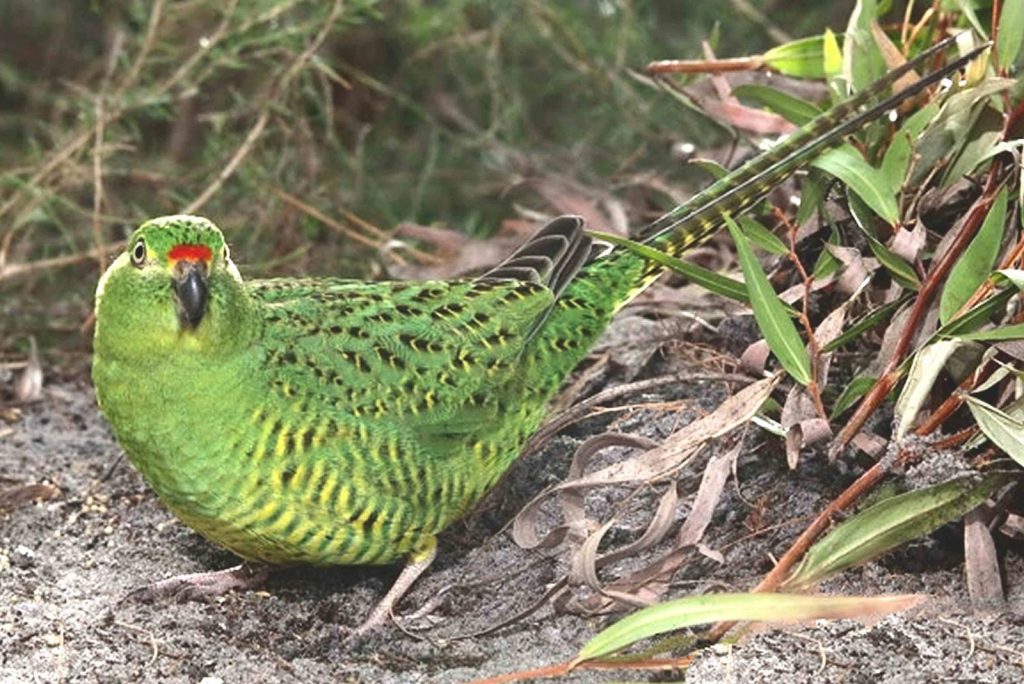
Australian Night Parrot
The Australian Night Parrot is today listed as “Endangered,” and it is estimated that there are less than 300 of them left in the wild and as few as 50. The last scientific sighting of the bird was back in 2018, but amateurs still report sightings.
Kunimasu
The Kunimasu was believed to become extinct back in 1940, but it was rediscovered back in 2011 in a remote lake. A type of salmon, the Kunimasu is silver in color and is a type of sockeye salmon, though unlike other sockeye, it lives its entire life in a lake.
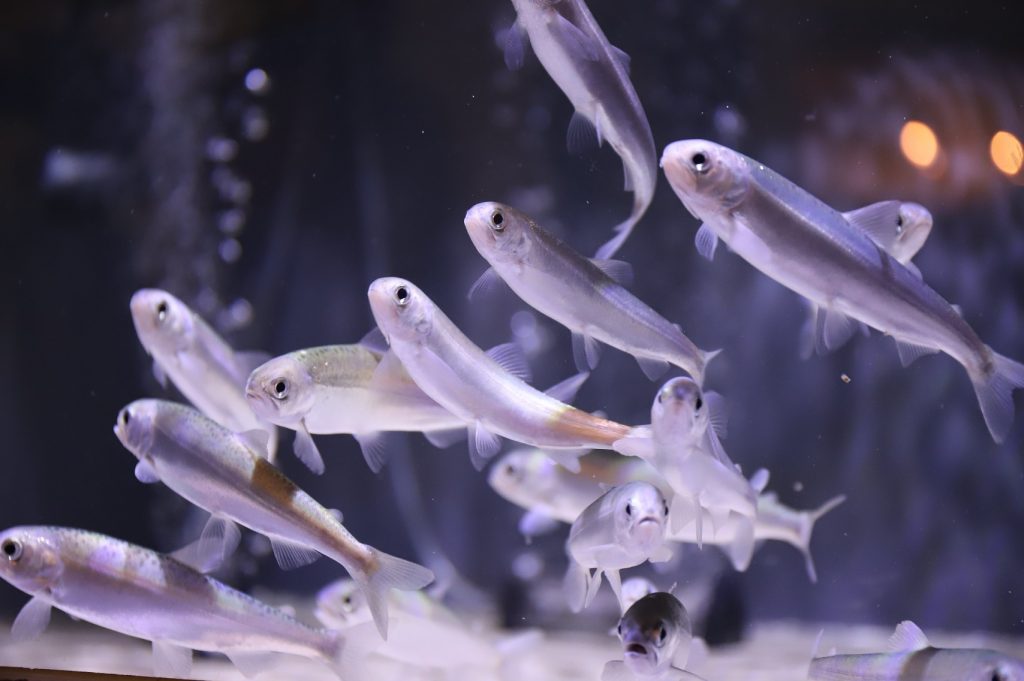
Kunimasu
Today, populations of Kunimasu are much stronger, and though there are not many left in the wild, if at all, populations are thriving in aquariums throughout Japan, including at the Fuji Yusui no Sato Aquarium.
Varanus Douarrha
Varanus Douarrha was first discovered in 1893 by a French naturalist. Once discovered, they were shipped to France, but on the way, all specimens were lost. Since then, none were seen again until 2017, when a population was found on the island of New Ireland.
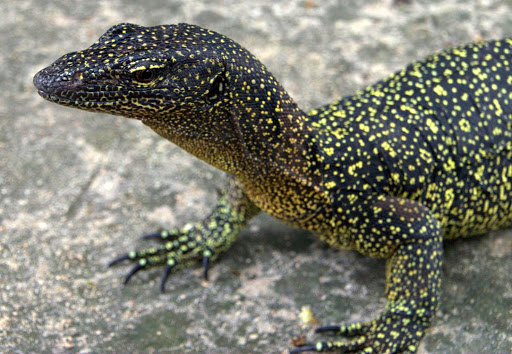
Varanus Douarrha
Varanus Douarrha is a type of monitor lizard, and they grow to just over 4 feet in length. It is still considered “Endangered,” but there is hope that with proper conservation efforts, these adorable lizards can thrive once again.
Spix’s Macaw
The stunning Spix’s Macaw, today, is probably only in existence in captivity, though one was sighted in 2016 flying through the trees. Native to Brazil, this beautiful blue bird is still very threatened, as there are only about 100 left in zoos, research facilities, and with private owners.
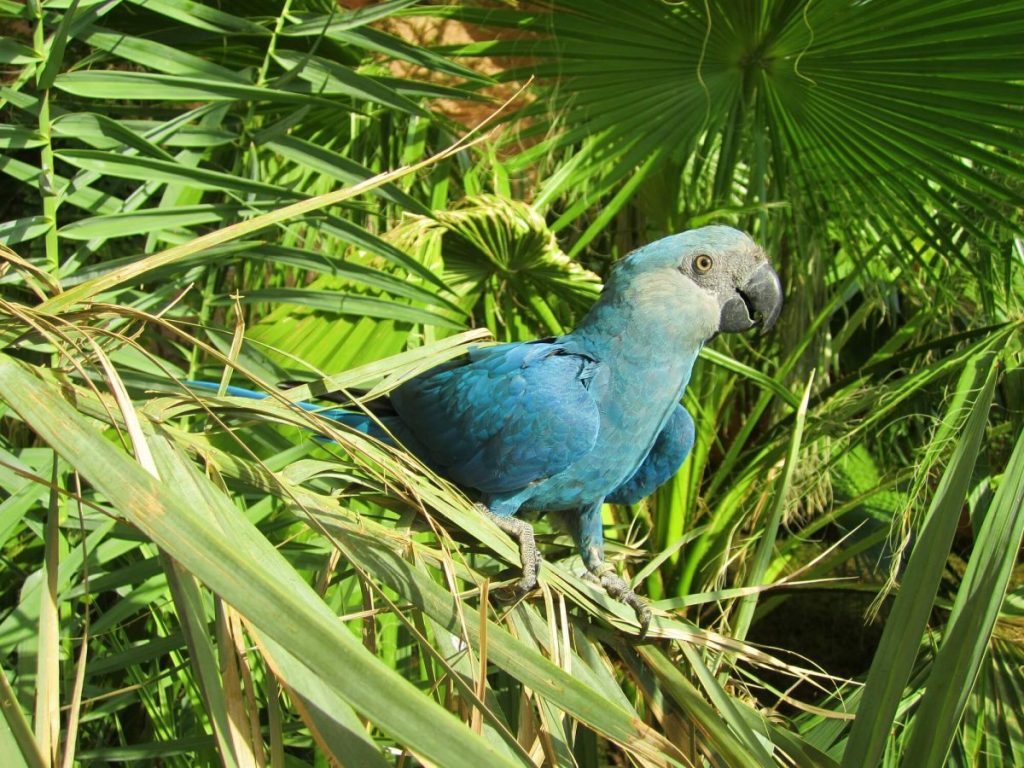
Spix’s Macaw
Though that seems like a small number, that population has grown from only seven Spix’s Macaws, and since one was spotted a couple of years ago in Brazil, there is still hope that these birds will continue to live on.
Red-Faced Liocichla
It took 178 years, but finally, the Red-Faced Liocichla was once again seen after seemingly disappearing from the face of the Earth. However, in 2016, a group of bird watchers noticed two of them perched in a tree…and the next day, they found eight more.
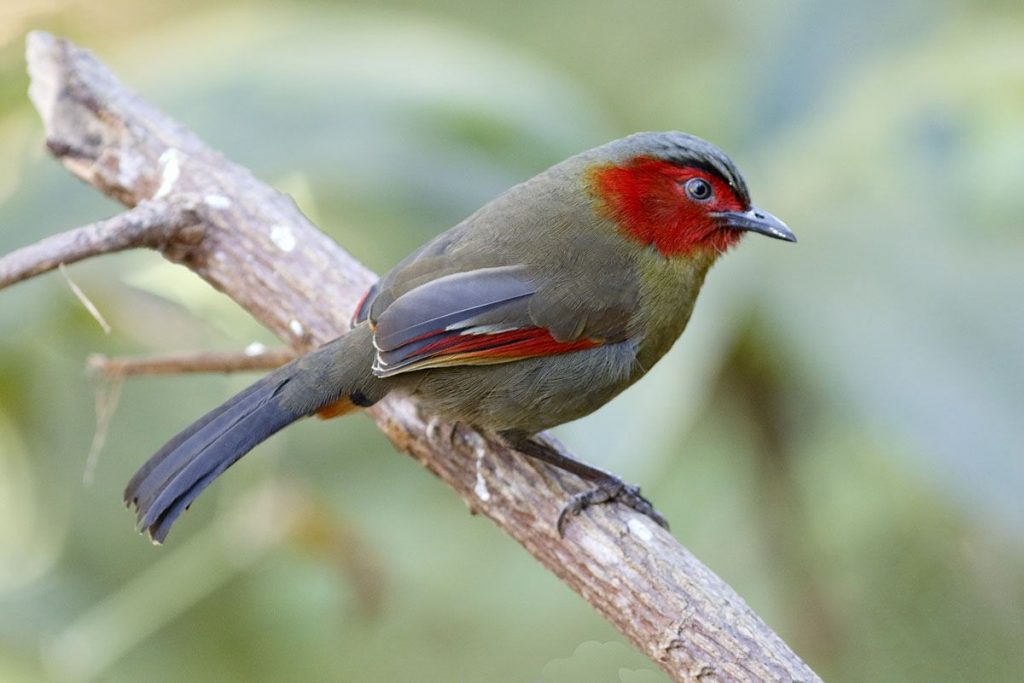
Red Faced Liocichla
Now that people knew where to look, it was found that there were many Red-Faced Liocichlas in the wild. Primarily, they have been seen in Nepal, Bangladesh, and Bhutan, amongst others in the region. Today, they are not considered to be “Endangered.”
New Zealand Storm Petrel
The New Zealand Storm Petrel is a small bird that was thought to have been extinct since 1850. However, it was re-discovered in 2003, and since, it has been declared “Critically Endangered” since 2010. It is unknown how many are in the wild.
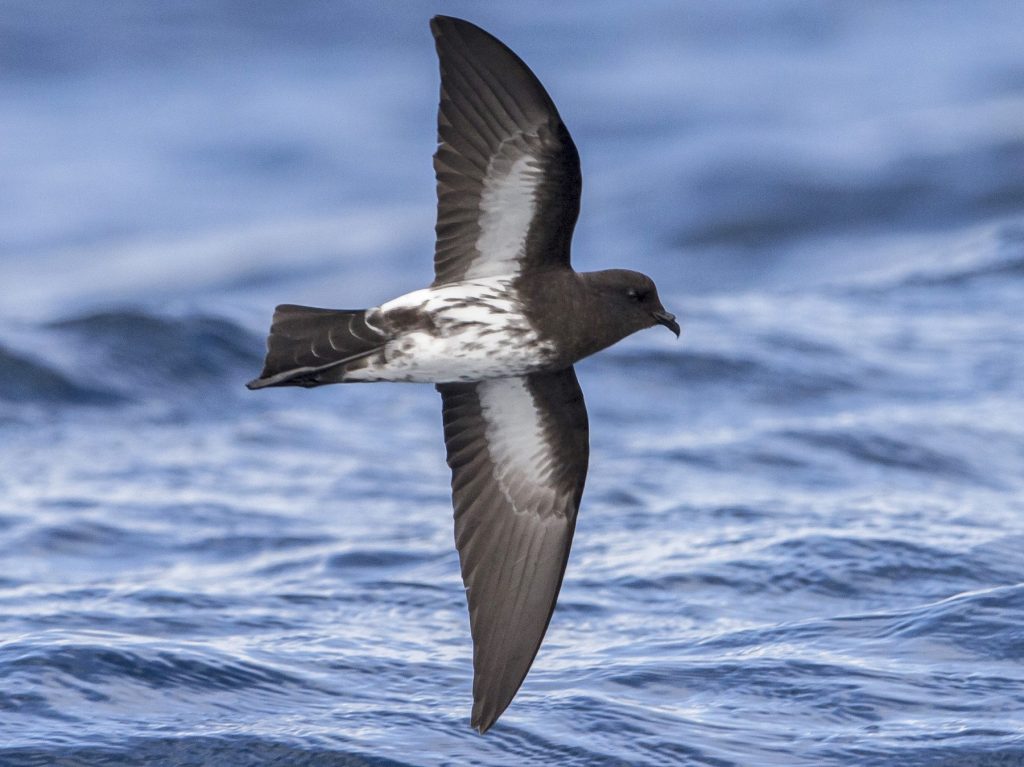
New Zealand Storm Petrel
After the New Zealand Storm Petrel was re-discovered, more sightings came. Eventually, some of the birds were captured and tagged, so there are some efforts to keep the species going. Birding groups see these birds more often than ever before, so there is hope that the population is growing.
Laotian Rock Rat
The Laotian Rock Rat was thought to have been extinct for millions of years. However, it was re-discovered in 2005. At first, it was believed that this was a new species, but further studies have found that this creature is, in fact, the Laotian Rock Rat.
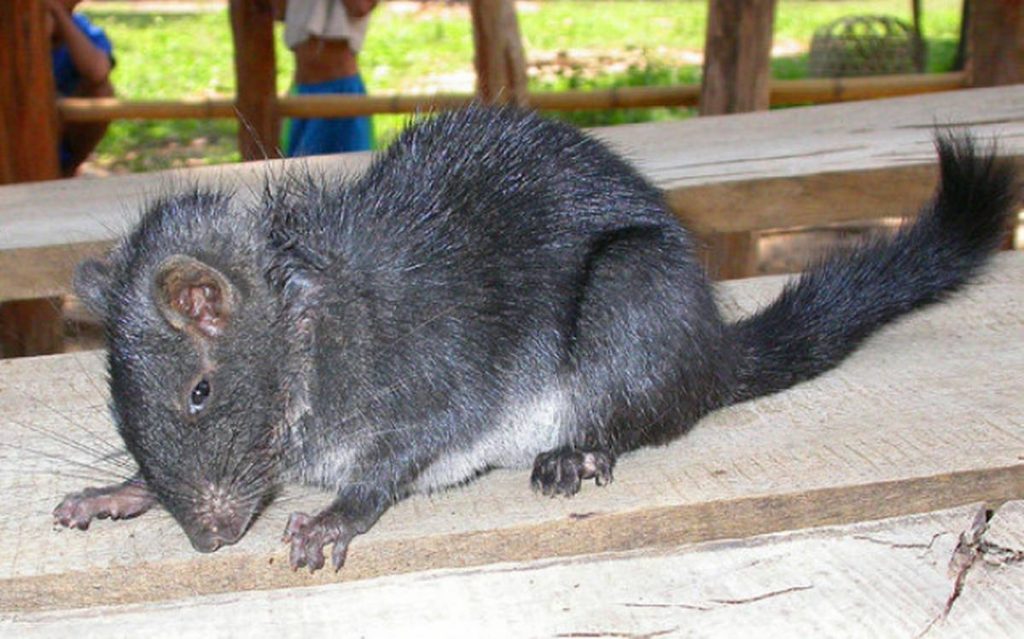
Laotian Rock Rat
Known as a “Lazarus species,” or one that has been raised from the dead, the Laotian Rock Rat is actually not that rare at all. In fact, in its native region, the local villagers actually capture and eat these animals.
Monoplacophora Mollusks
Monoplacophora Mollusks were believed to be extinct up until 1952. Until then, only fossil records have been found. This creature is one of the oldest in existence, dating back to the Middle Pleistocene era. They live in the deep sea.
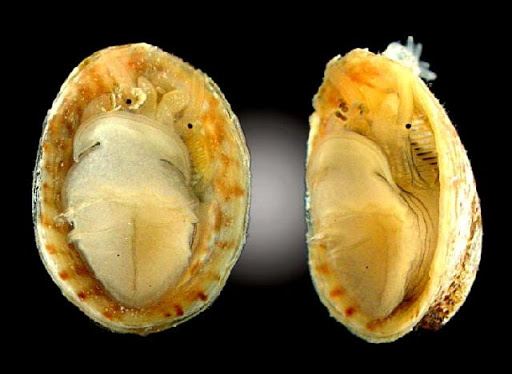
Monoplacophora Mollusks
The re-discovery of Monoplacophora Mollusks is considered to be one of the most important discoveries in modern biology. These are very primitive creatures, and they have not evolved much in millions of years. They have a single shell, and it fully covers the body.
Mountain Pygmy Possum
The Mountain Pygmy Possum is a small marsupial native to Australia. it was thought to be extinct for many years, but after re-discovery, it was found to still be in existence. The Mountain Pygmy Possum is listed as “Critically Endangered.”
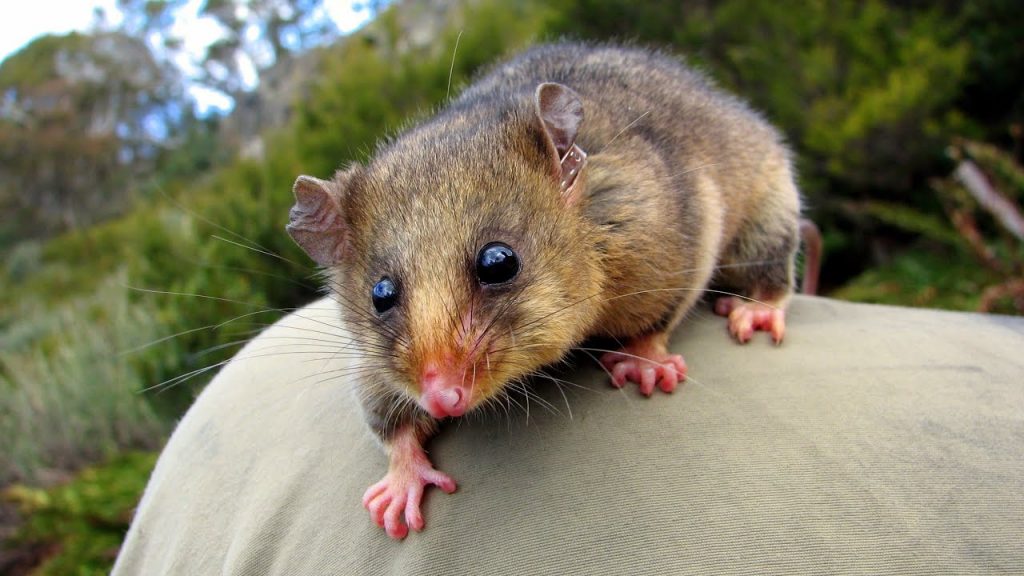
Mountain Pygmy Possum
Unfortunately, the Mountain Pygmy Possum may be extinct in the wild, again, thanks to the terrible Australian wildfires that have ravaged the landscape. Since the fires, there have been no reports of the species in the wild, though they are still considered to be “Critically Endangered.”
Large-Billed Reed Warbler
Before 2006, the last time the Large-Billed Reed Warbler was seen was back in 1867. Since then, a few different breeding areas have been found in places like Kazakhstan, Afghanistan, and Tajikistan. This shows that the bird is still living but how many are left is unknown.
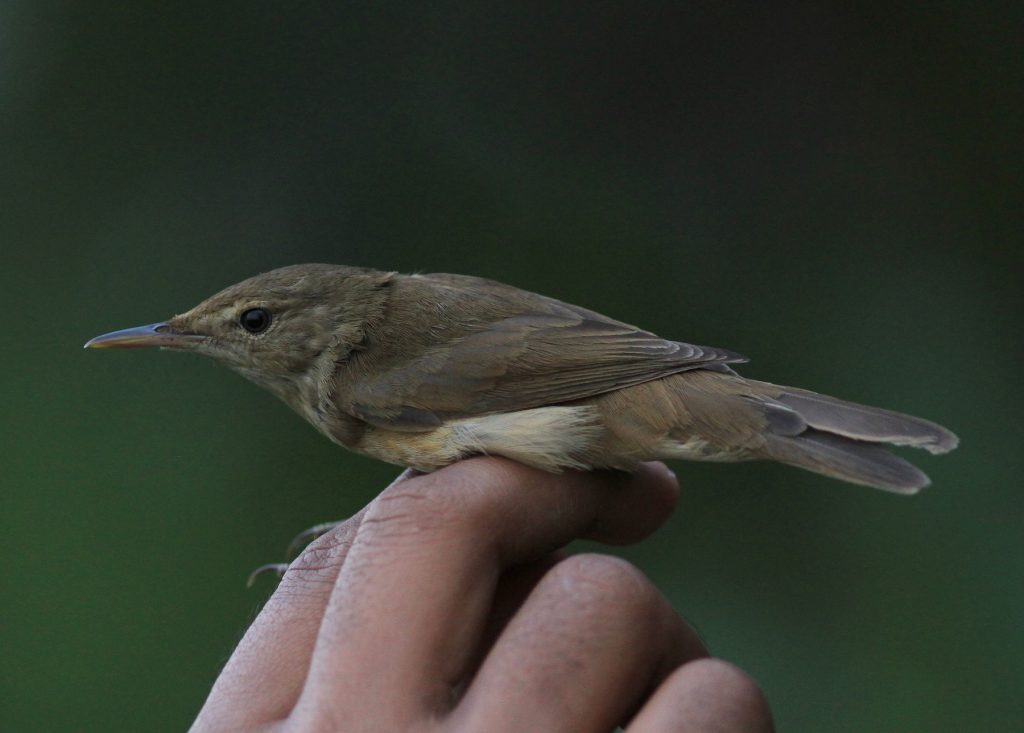
Large Billed Reed Warbler
Though the Large-Billed Reed Warbler is not seen often, it is one of the “Holy Grails” for birders since there are so few left in the wild. A lot of DNA research has been done on the bird, too, and it was even used to match the original specimen from 1867.
New Holland Mouse
The New Holland Mouse is a small rodent native to southeast Australia. It was thought to be extinct in the late 1800s, but a re-discovery in 1967 confirmed that it was still living. It is currently classified as “Vulnerable.”
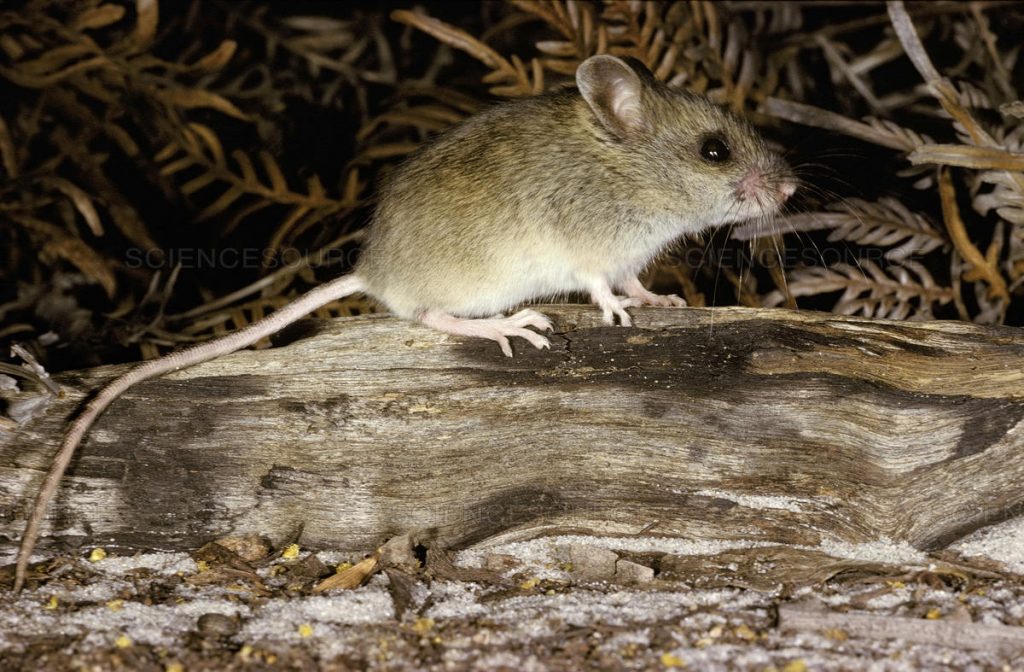
New Holland Mouse
The current populations of New Holland Mice are still declining due to habitat destruction and predators, including feral cats. There is also a lack of vegetation at play, which these rodents eat, so some simply starve. There are conservation efforts in effect, however, so hopefully the future of the New Holland Mouse is brighter.
La Palma Giant Lizard
The La Palma Giant Lizard is native to a small Spanish island, La Palma. It was thought to be extinct for about 500 years, but there have been a few sightings in recent years. However, none of them have been scientific, only by amateurs.
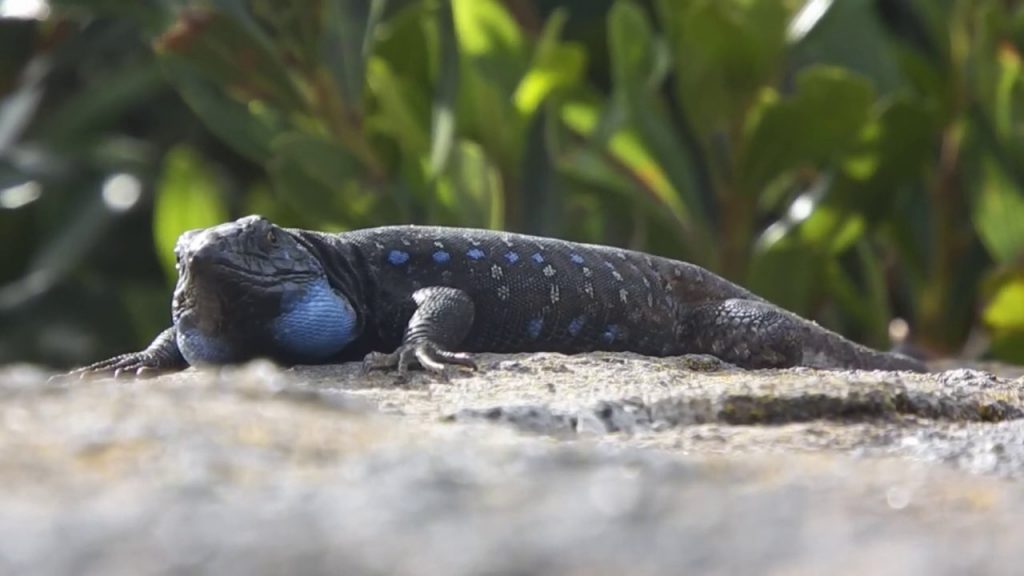
La Palma Giant Lizard
Because there have not been any confirmed La Palma Giant Lizard sightings by a scientist in recent times, it is unknown how many are still out there. It’s possible that there are still lizards out there, but there has been no research to determine this.
Sahul Reef Snake
Found off the coast of Australia, the Sahul Reef Snake is another reptile that was thought to be extinct, but there are specimens out there. It is believed to only breed on a certain reef, and from 2000 to 2015, not one was found in the wild.
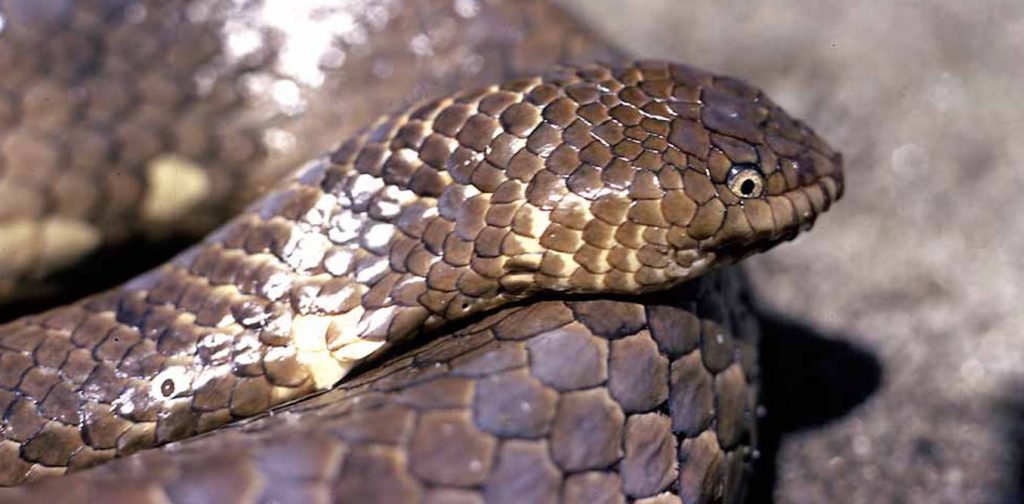
Sahul Reef Snake
In 2015, a research study was done to see if the Sahul Reef Snake was, indeed, extinct. During this research, a few of the snakes were found, including a mating pair. Currently, the Sahul Reef Snake is listed as “Critically Endangered.”
Yellow-Tailed Woolly Monkey
Only found in the Peruvian Andes, the Yellow-Tailed Woolly Monkey was first discovered in 1812, and then for 100 years, there were only a couple of sightings. Thus, it was declared extinct. In 1926, however, three of them were captured and sent to a museum, as it was believed that they were a new species.
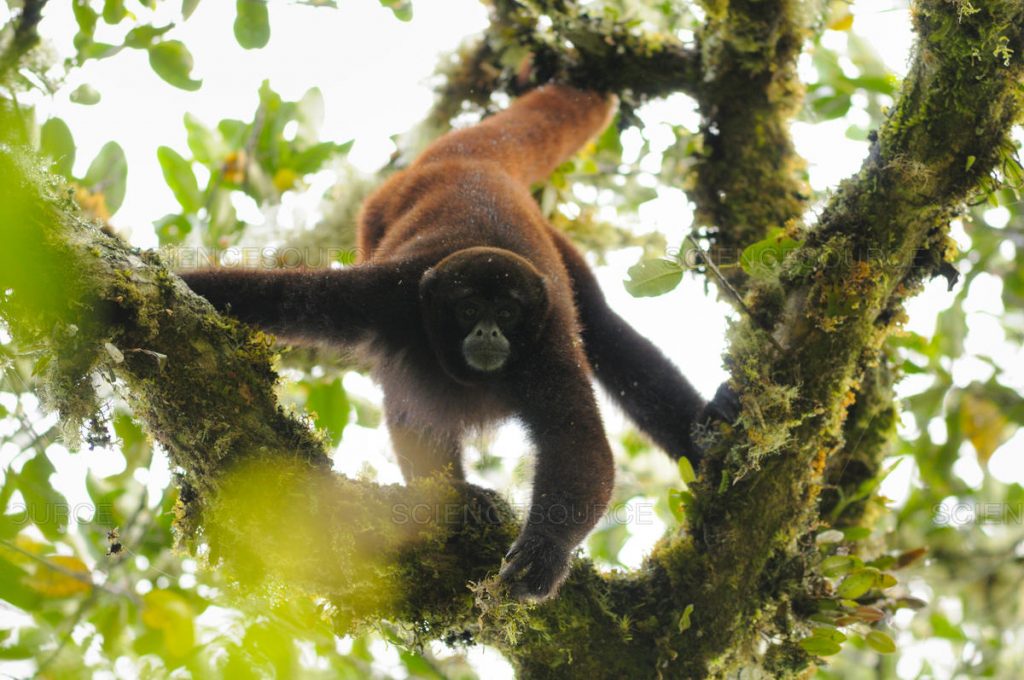
Yellow Tailed Woolly Monkey
After the Yellow-Tailed Woolly Monkey was found in the 1920s, it wasn’t seen again until 1974. Conservation work began at this point, and though it is unknown how many are still in the wild, it is listed as “Critically Endangered.”
Hose’s Langur
Hose’s Langur was not discovered until the 1980s, and though populations were thriving through the mid 1990s, by 2003, populations had fallen by as much as 80 percent. The reason? Deforestation. So, once again, Hose’s Langur is heading for extinction.

Hose’s Langur
There are still populations of Hose’s Langur in the wild, and they are currently listed as “Vulnerable.” There are conservation opportunities available, and the only way this creature will survive is if humans intervene. Hopefully, we can help these animals live well into the future.
Bridled Nail-Tail Wallaby
The Bridled Nail-Tail Wallaby is a small wallaby that is currently listed as “Vulnerable.” Currently, it is estimated that there are only about 500 adults in the wild and just over 2000 of them in captivity in zoos and research facilities.
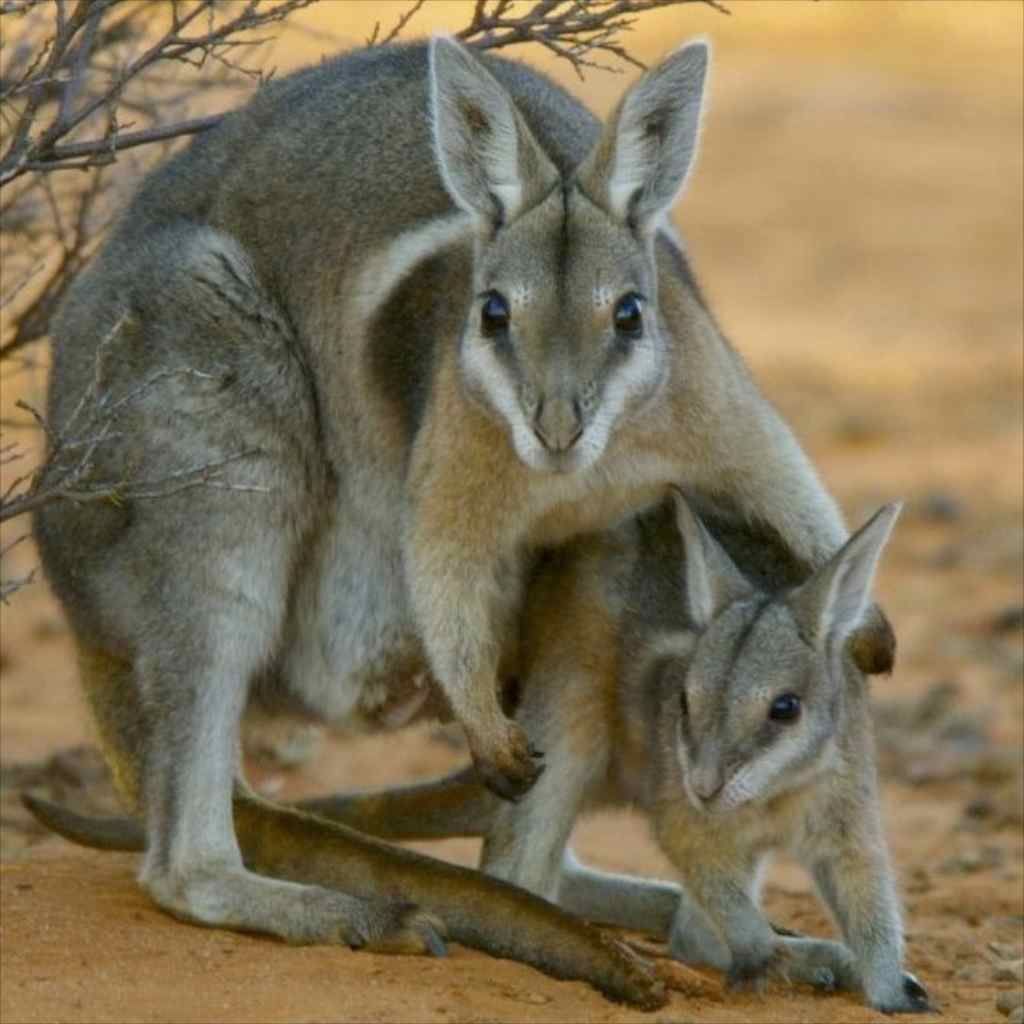
Bridled Nail Tail Wallaby
The first Bridled Nail-Tail Wallaby to be recorded was found in 1840. However, for many years, there were no sightings of this elusive marsupial thanks to hunting, wildfires, and predators. Since the species has been rediscovered, conservation efforts have begun, and they are fairly common to see in zoos around Australia.
Cropan’s Tree Boa
Known as the “World’s Rarest Boa,” Cropan’s Tree Boa is native to Brazil, and until its rediscovery in 2017, it had not been seen since 1957. Currently, the snake is listed as “Endangered,” and though it is believed there are specimens in the wild, they are rarely seen.
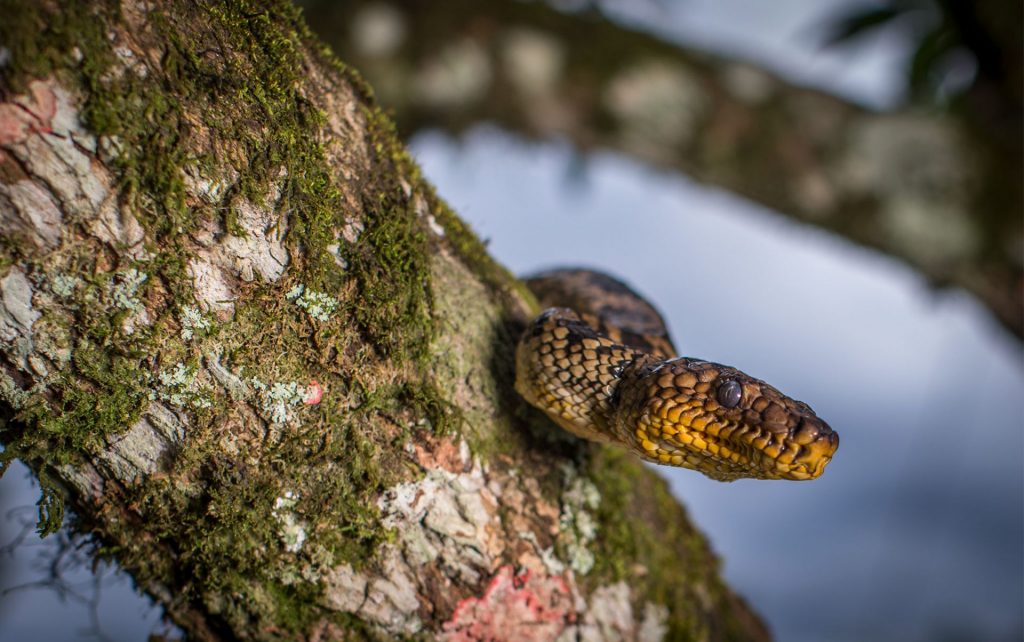
Cropan’s Tree Boa
Before 2017, only a handful were found in the wild, which is why most people believed that the Cropan’s Tree Boa was extinct. When the specimen was captured in 2017, it was affixed with a radio transmitter and released so researchers could learn more about the species.



